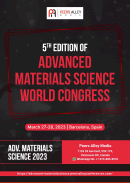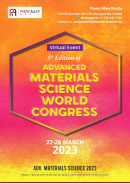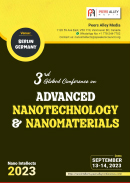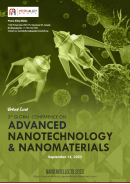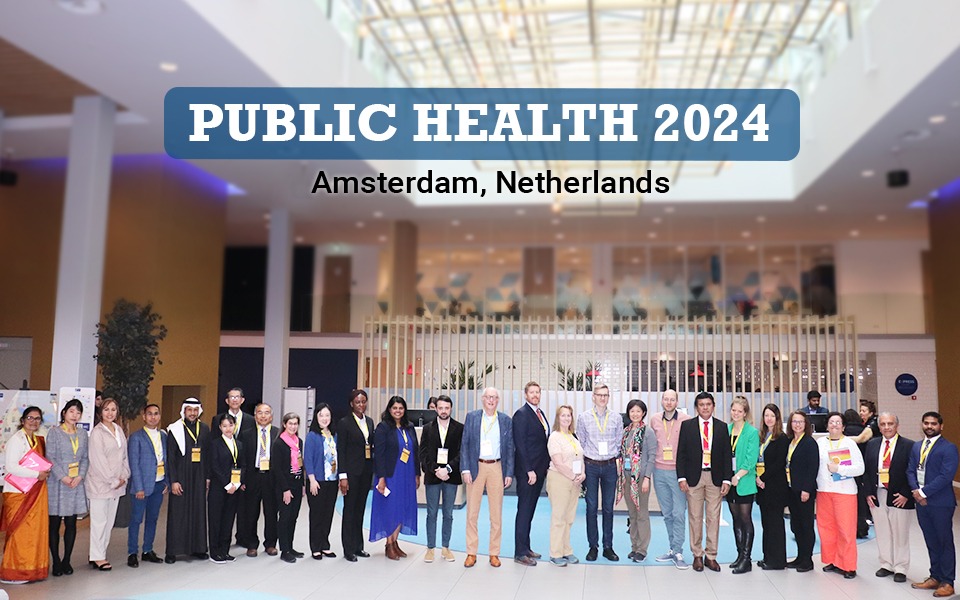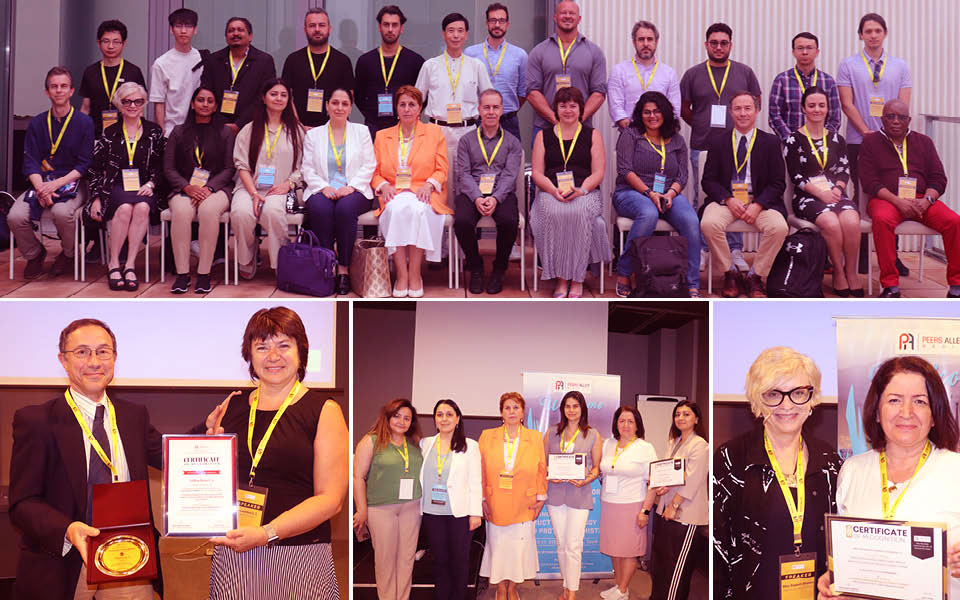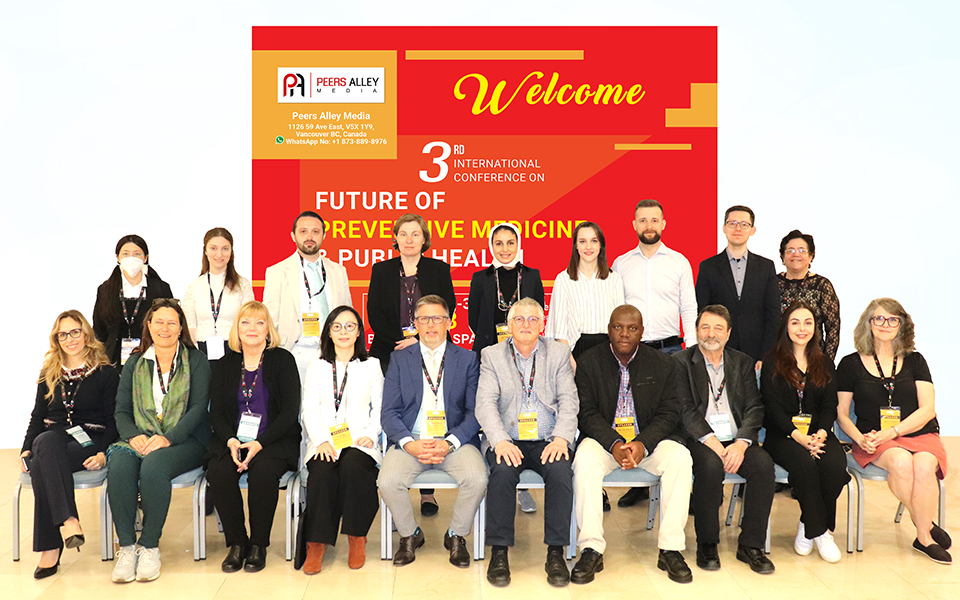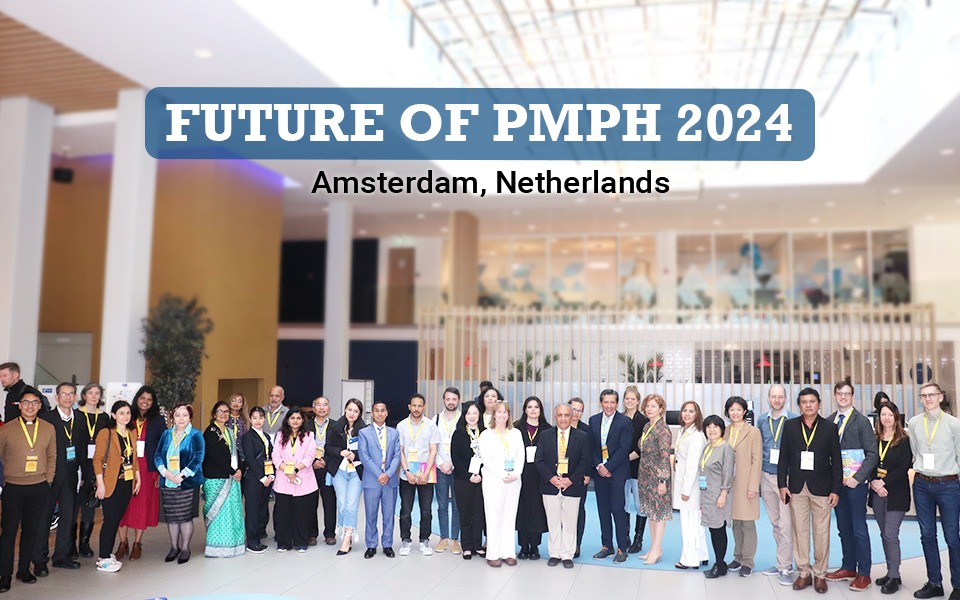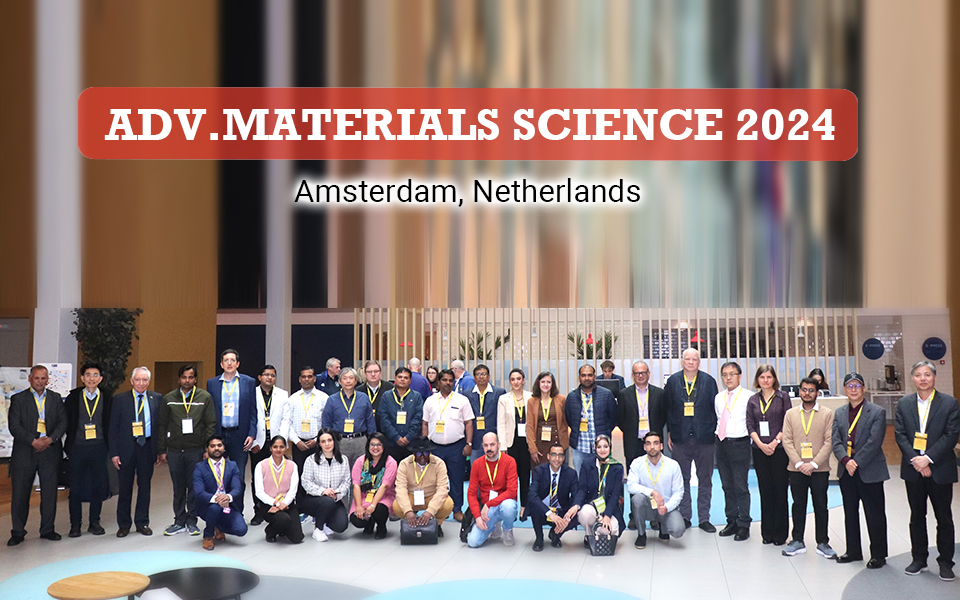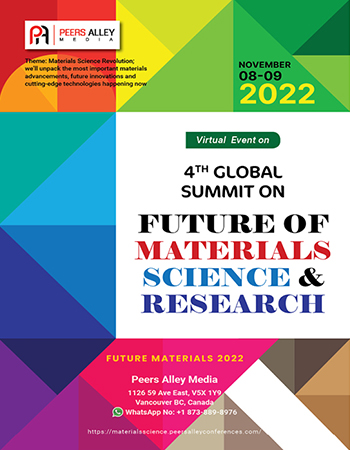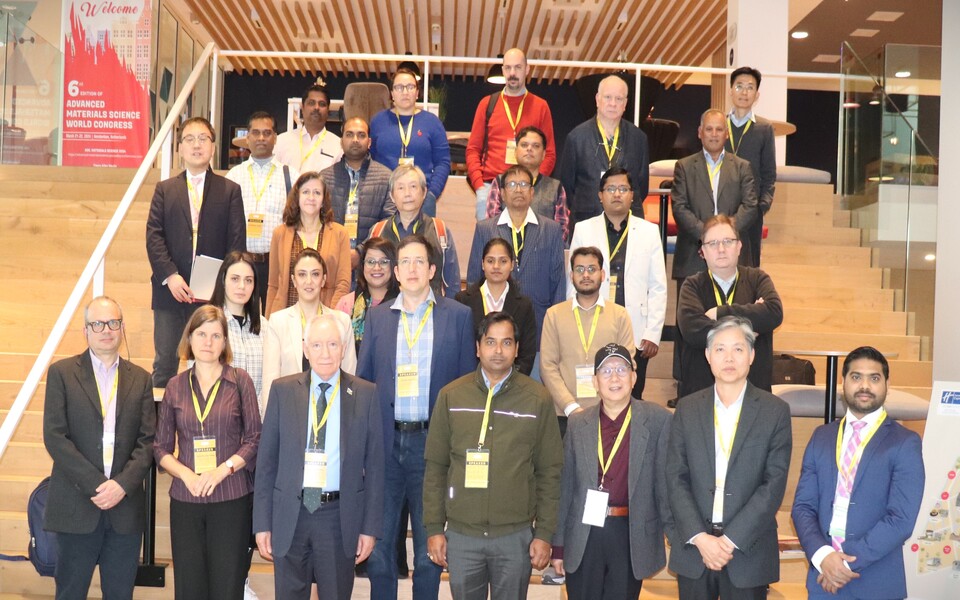
Smart Materials 2024
Peers Alley Media,Canada

Primary goal of attending an international conference is to present a paper to the experts and influencers. It gives you a platform to exchange your interest-related thoughts, paving the way for possible future collaborations.

Use this platform to build connections with an elite group of wise men and women to enhance your intellect. Young entrepreneurs, this is a great platform to connect with your peers.

Knowledge is Power. Knowledge teaches skills. Skills define excellence. Use this platform to become cognizant of your interest area to achieve excellence in your domain.

Attending a conference give you opportunity to get your abstract or paper published in conference proceedings

Meet and greet a myriad of industry professionals and academia experts with common interest. Every meal will be an opportunity to meet and interact with fellow researchers, attendees and experts.

Expand your professional competency and learn useful tips and tricks of your industry in our skill-building workshops.

Explore insights on recent advancements, new equipment, new techniques, and unpublished data, learn from thought-leaders and get to network with a great line up of speakers.

Our exhibits floor offers the attendees with a dynamic display of the latest products with cutting-edge technology.

Investing in you is the best investment. Peers Alley conferences give the patrons with a feeling of the serendipity of real learning, skill development in strategic workshops, networking and start-up opportunities, thus, is value for money.

Attending the conference gives you much needed break from your regular duties. It also allows you to explore new cities, culture and meet new people. You will feel energized and rejuvenated to return to the university and continue with the job after attending the conference.
Conferences are vital forum for academic researchers and business leaders. "It involves multiple presentations, interactive breakout sessions, hands-on product demonstrations and unrivalled networking opportunities".
We have invited some of the world's most sought-after keynote speakers, experts, brand ambassadors, and industry leaders to share their thoughts and ideas with our conference guests.
Register Now
The Adv. Physics 2025 Congress aims to foster impactful research, innovation, and collaboration in physics, chemistry, and materials science, addressing global challenges and opportunities
Advanced Material Physics Development: Explore advancements in materials with enhanced properties to meet the growing demand in the global industrial market, especially focusing on conductivity, durability, and efficiency.
Semiconductor Innovations: Drive innovations in semiconductor technology to capitalize on the projected $655.6 billion market in 2025, emphasizing efficiency, miniaturization, and applications like quantum computing.
Integration of Physics in Industrial Processes: Enhance industrial processes by applying physics principles, fostering collaboration between physicists and industries for innovation, efficiency, and resource optimization. Foster collaborations between educational institutions and industries to train a skilled workforce, addressing the increasing demand in physics-related sectors.
Europe, Asia-Pacific and Middle East Market Expansion: Develop strategies for expanding physics-related industries in the Europe, Asia-Pacific and the Middle East region, collaborating with local institutions and businesses to capitalize on steady market growth.
----------------------------------------------------
Physics Applications and Scientific Innovations 
Dear Esteemed Colleagues, Researchers, and Distinguished Guests,
We are delighted to offer a heartfelt welcome to the Global Conclave on Advanced Physics: Applications and Scientific Innovations, scheduled to take place on September 22-23, 2025, in the vibrant city of Barcelona, Spain.
This congress serves as a nexus for bridging geographical boundaries, fostering collaboration, and sharing diverse perspectives. As we convene in Barcelona, let us collectively address the necessity of discussing pivotal physics topics such as quantum computing, renewable energy advancements, and the intersection of physics and materials of chemistry with artificial intelligence. These discussions are not only paramount for scientific progress but also integral to addressing the pressing challenges of our time.
Theme: Frontiers of Interdisciplinary Physics: From Quantum Phenomena to Advanced Materials
Key Highlights:
• Plenary Sessions by Renowned Physicists
• Networking Opportunities with Peers and Experts
• International Collaboration and Partnership Forums
• Poster Presentations and Oral Talks
• Student Sessions Encouraging Future Leaders
Barcelona, with its rich cultural heritage and breathtaking architecture, provides an inspiring backdrop for our congress. We encourage you to explore the city's charm and immerse yourself in the vibrant scientific atmosphere that our event promises to offer.
Your presence and contributions are invaluable as we collectively strive for excellence in the realms of advanced physics, chemistry and materials science.
We look forward to welcoming you to the Global Conclave on Advanced Physics, where knowledge knows no boundaries and collaboration knows no borders.
Sincerely,
Adv. Physics 2025
Organizing Committee
Peers Alley Media
1126 59 Ave East, V5X 1Y9
Vancouver BC, Canada

University of Texas, USA

University of Southern California, USA

University of Dundee, UK

Consultant Neurologist, Australia

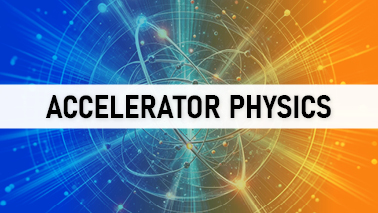
Accelerator physics is a branch of physics that focuses on the study and design of particle accelerators. Particle accelerators are devices that use electric and magnetic fields to propel charged particles, such as protons or electrons, to high speeds and energies.
These accelerated particles are then used for various purposes, including fundamental research in particle physics, medical applications, and industrial processes.
The following are important areas in accelerator physics:
Basic Principles:
Electromagnetic Fields: Accelerators use electric and magnetic fields to accelerate and guide charged particles. Radiofrequency cavities generate electric fields to accelerate particles, while magnets steer and focus the particle beams.
Lorentz Force: Charged particles experience a force when moving through magnetic and electric fields. The Lorentz force is crucial for understanding particle trajectories in accelerators.
Types of Accelerators:
Linear Accelerators (Linacs): Particles travel in a straight line, and they are accelerated by radiofrequency cavities along the beamline. Circular Accelerators (Synchrotrons and Cyclotrons): Particles move in a circular path, and magnetic fields are used to keep them in a circular orbit while radiofrequency cavities provide energy boosts.
Particle Dynamics:
Particle Beam Optics: Study of the behavior of particle beams, including focusing, steering, and collimation.
Beam Transport: Approaches for moving and guiding particle beams across different accelerator components.
Beam Control and Diagnostics:
Beam Instrumentation: The characteristics of the particle beam can be measured and controlled with the aid of equipment such as detectors, beam position monitors, and beam profile monitors.
Beam Diagnostics: Techniques to analyze the characteristics of the particle beam, such as its energy, intensity, and spatial distribution.
Colliders and Detectors:
Collider Experiments: In order to study fundamental particles and forces, high-energy particle colliders, like the Large Hadron Collider (LHC), collide particles at very high speeds.
Particle Detectors: Particle detectors are used to detect and analyze the particles produced in accelerator experiments.
Accelerator physics is a multidisciplinary field that combines aspects of electromagnetism, classical mechanics, quantum mechanics, and relativity. The development and optimization of accelerators have led to significant advancements in our understanding of the universe and have practical applications in various domains.
Tags
Physical Chemistry Conferences
Condensed Matter Physics Conferences
Physics Conferences 2025 Asia
Quantum Mechanics Conferences
Astrophysics Conferences
Cosmology Conferences
Physics Conferences
Physics Conferences 2025 UK
Quantum Computing Conferences
Particle Physics Conferences
Medical Physics Conferences
Nuclear Physics Conferences
Materials Chemistry Conferences

Acoustics is the branch of physics that deals with the study of sound and its transmission, production, and effects. It encompasses a wide range of phenomena related to the generation, propagation, and reception of mechanical waves in gases, liquids, and solids. These are a few important acoustic features:
Sound Waves:
Definition: Sound is a mechanical wave that propagates through a medium (solid, liquid, or gas) as a series of compressions and rarefactions.
Speed of Sound: The speed of sound depends on the properties of the medium, such as density and elasticity.
Acoustic Waves and Characteristics:
Longitudinal Waves: Sound waves are typically longitudinal waves, meaning the oscillations are parallel to the direction of wave propagation.
Frequency and Pitch: The quantity of oscillations per unit of time is known as frequency, and it controls the sound's pitch. Low frequencies are associated with low-pitched noises, and high frequencies with high-pitched ones.
Amplitude and Loudness: Amplitude is the maximum displacement of particles in the medium, and it corresponds to the loudness of the sound.
Sound Propagation:
Reflection: Sound waves can bounce off surfaces, leading to reflection.
Refraction: Changes in the medium can cause sound waves to change direction.
Diffraction: Sound waves can bend around obstacles and spread out when passing through openings.
Acoustic Measurement:
Decibels (dB): A logarithmic unit of measurement for sound intensity. It offers a scale for estimating sound intensity.
Sound Level Meters: Instruments used to measure sound levels in decibels.
Musical Acoustics:
Resonance: The phenomenon where an object vibrates with maximum amplitude at its natural frequency. It plays a crucial role in the production of musical tones.
Instruments: Certain tones and timbres can be produced by adjusting the acoustics and design of musical instruments.
Room Acoustics:
Reverberation: The persistence of sound in an enclosed space due to multiple reflections.
Absorption: Materials in a room can absorb sound, affecting its acoustical properties.
Ultrasound and Infrasound:
Ultrasound: High-frequency sound waves that are not heard. used in numerous industrial applications as well as medical imaging (ultrasound imaging).
Infrasound: Sound waves with frequencies below the audible range. Can be produced by natural events like earthquakes and some industrial processes.
Applications:
• Audio Engineering
• Medical Imaging
• Environmental Noise Control
• Communication Systems
Acoustics is a diverse field with applications in physics, engineering, music, medicine, and various industries. Scientists and engineers in acoustics work on understanding and manipulating sound waves for practical purposes and to enhance our overall knowledge of the physics of sound.
Tags
Quantum Computing Conferences
Physics Conferences 2025 UK
Nuclear Physics Conferences
Nanotechnology Conferences
Quantum Mechanics Conferences
Physics Conferences 2025 USA
Physics Conferences 2025 Asia
Medical Physics Conferences
Nanotechnology Conferences 2025 Europe
Cosmology Conferences
Physics Conferences
Physics Conferences 2025 Europe
Physical Chemistry Conferences
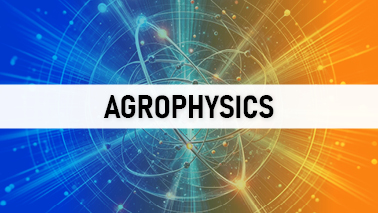
Agrophysics is a branch of science that focuses on the study of physical properties and processes related to agriculture, particularly in the soil-plant-atmosphere continuum. It involves the application of principles and methods from physics to understand and quantify the physical interactions within the agricultural system.
Key areas of interest in agrophysics include:
Soil Physics: Investigating the physical characteristics of soils, such as their porosity, structure, and ability to hold water, in order to understand how these elements affect the growth and development of plants.
Plant Physics: Studying the physiological functions of plants, such as transpiration, nutrient uptake, and water uptake, in order to improve agricultural operations and crop yields.
Environmental Physics: Researching how agricultural systems interact with their surroundings, particularly how the weather, climate, and other environmental factors affect crop productivity.
Instrumentation and Measurement Techniques: Developing and using specialized instruments to measure and monitor physical parameters relevant to agriculture, such as soil moisture, temperature, and light intensity.
Modeling and Simulation: Developing effective and sustainable farming practices by using mathematical models and simulations to forecast and understand the intricate physical interactions inside agroecosystems.
Agrophysics plays a crucial role in improving agricultural productivity, resource management, and environmental sustainability. By understanding the physical aspects of the soil-plant-atmosphere system, scientists and researchers can develop strategies to optimize crop production, conserve water, and minimize the environmental impact of agricultural activities.
Tags
Physics Conferences 2025
Nanotechnology Conferences 2025 Europe
Quantum Mechanics Conferences
Cosmology Conferences
Physical Chemistry Conferences
Particle Physics Conferences
Materials Chemistry Conferences
Medical Physics Conferences
Quantum Computing Conferences
Physics Conferences
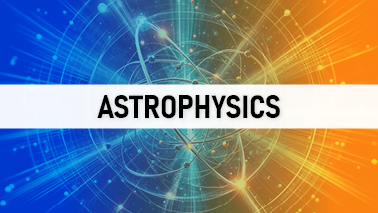
Astrophysics is a branch of astronomy that employs the principles of physics and chemistry to understand how stars, planets, galaxies, and the universe itself behave. It involves the study of celestial objects and phenomena, their properties, and the underlying physical processes that govern their behavior.
These are some of the main fields of astrophysics:
Stellar Astrophysics: Examines the structure, evolution, and lifecycle of stars. This includes understanding the processes of nuclear fusion that occur within stars, leading to their energy production and eventual fates.
Galactic Astrophysics: Investigates the structure, dynamics, and evolution of galaxies. This field explores the distribution of matter in galaxies, the formation of galaxies, and the interactions between galaxies within the universe.
Cosmology: Studies the large-scale structure and evolution of the entire universe. Cosmologists seek to understand the fundamental properties of the universe, its origin, and its ultimate fate.
High-Energy Astrophysics: Focuses on energetic phenomena, such as black holes, neutron stars, supernovae, and quasars. This field uses observations in X-rays, gamma-rays, and other high-energy wavelengths to study these extreme cosmic objects.
Exoplanet Research: Explores the discovery and characterization of planets beyond our solar system. Astrophysicists investigate the properties of exoplanets, their atmospheres, and the conditions that might support life.
Cosmic Microwave Background (CMB): Studies the faint radiation that fills the universe, known as the cosmic microwave background. This radiation provides important clues about the early universe and its subsequent evolution.
Astroparticle Physics: Examines the relationship between particles at the smallest scales (particle physics) and the universe at the largest scales (cosmology). This includes the study of dark matter and dark energy.
To explore the mysteries of the universe, astronomers use a combination of observational data, theoretical models, and state-of-the-art tools like telescopes and space missions. Astrophysics provides information that not only broadens our understanding of the universe but also advances scientific knowledge overall and opens up new avenues for technological improvement.
Tags
Quantum Mechanics Conferences
Particle Physics Conferences
Physics Conferences 2025 Europe
Physics Conferences 2025 Asia
Nanotechnology Conferences 2025 Europe
Cosmology Conferences
Physics Conferences
Quantum Computing Conferences
Physics Conferences 2025 USA
Nanotechnology Conferences 2025 Europe
Physics Conferences 2025 UK
Condensed Matter Physics Conferences
Medical Physics Conferences
Materials Science Conferences
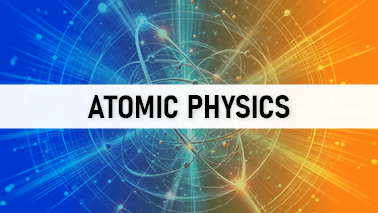
Atomic physics is a branch of physics that focuses on the study of atoms as individual entities and the behavior of their constituent particles. It involves understanding the structure of atoms, the interactions between their components, and the way atoms respond to external forces. Key aspects of atomic physics include:
Atomic Structure: Investigating the internal structure of atoms, which typically consist of a nucleus containing protons and neutrons, surrounded by electrons in various energy levels or shells. Understanding the arrangement of electrons within an atom is crucial for explaining its properties.
Quantum Mechanics: The application of quantum mechanics to elucidate the behavior of particles within atoms is a crucial aspect of atomic physics. It serves as the foundation for the development and practical implementation of quantum theory, providing explanations for phenomena like quantized energy levels and wave-particle duality.
Spectroscopy: Studying the interaction of matter with electromagnetic radiation, such as light. Spectroscopy is widely used in atomic physics to analyze the spectra emitted or absorbed by atoms, providing information about their energy levels, composition, and other properties.
Atomic Interactions: The study of the forces and interactions among atoms involves delving into various aspects such as atomic collisions, ionization, and chemical reactions occurring at the atomic scale.
Atomic Models: Developing and refining models that describe the behavior of atoms. Historical models, such as the Bohr model, have given way to more sophisticated models based on quantum mechanics, providing a more accurate depiction of atomic structure and behavior.
Laser Physics: Lasers play a crucial role in the manipulation and examination of atoms. They are extensively employed in experiments related to atomic physics, allowing for accurate regulation of atomic conditions and promoting advancements in fields such as quantum optics.
Atomic Clocks: Developing highly accurate timekeeping devices based on the vibrations of atoms. Atomic clocks, which use the vibrations of atoms as a reference, are crucial for applications such as global positioning systems (GPS) and scientific experiments.
Nuclear Physics: Nuclear physics, although separate from atomic physics, frequently intersects with the examination of atomic nuclei that exist within atoms. This discipline delves into the characteristics and dynamics of atomic nuclei, encompassing nuclear reactions and decay.
Atomic physics is of utmost importance in a wide range of scientific and technological domains. It encompasses fundamental investigations in quantum mechanics as well as practical implementations in areas such as chemistry, materials science, and advanced technologies.
Tags
Physics Conferences 2025 Europe
Nanotechnology Conferences 2025 Europe
Physics Conferences 2025 UK
Medical Physics Conferences
Quantum Mechanics Conferences
Nanotechnology Conferences
Physical Chemistry Conferences
Physics Conferences
Physics Conferences 2025
Quantum Computing Conferences
Physics Conferences 2025 USA
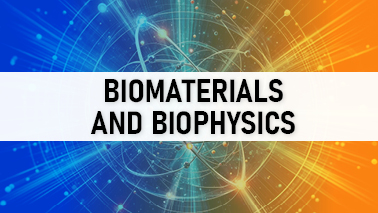
"Biomaterials and Biophysics" refers to the interdisciplinary field that involves the study and application of materials in biological systems and the principles of physics to understand biological phenomena.
Biomaterials:
Definition: Biomaterials are substances that have been engineered to interact with biological systems for medical or therapeutic purposes. These materials can be natural or synthetic and are designed to replace or augment tissues, organs, or functions within the body.
Applications: Biomaterials find applications in areas such as medical implants, drug delivery systems, tissue engineering, and regenerative medicine. Examples include artificial joints, dental implants, and biodegradable sutures.
Biophysics:
Definition: Biophysics is a branch of science that applies the principles and methods of physics to understand how biological systems work. It involves the study of the physical properties of biological molecules, cells, and tissues.
Applications: Biophysics is used to investigate various biological processes, such as the structure and function of biomolecules, molecular dynamics, and the mechanics of cells and tissues. Techniques such as X-ray crystallography, nuclear magnetic resonance (NMR), and atomic force microscopy are commonly employed in biophysics research.
Interdisciplinary Connection:
The convergence of biomaterials and biophysics holds great importance as it enables scientists and professionals to create and comprehend materials that interact in the most efficient manner with biological systems. Biophysics offers valuable knowledge about the physical characteristics and actions of biological structures, thereby aiding in the advancement of biomaterials that possess improved biocompatibility, mechanical attributes, and functionality.
Researchers in this field may investigate topics such as the mechanical properties of tissues, the behavior of biomaterials at the molecular level, and the influence of physical forces on biological processes. The goal is often to create innovative solutions for medical treatments, diagnostics, and interventions that are safe, effective, and compatible with the complexities of living systems.
Tags
Astrophysics Conferences
Physical Chemistry Conferences
Particle Physics Conferences
Nanotechnology Conferences 2025 Europe
Physics Conferences 2025 UK
Physics Conferences 2025 USA
Physics Conferences 2025
Medical Physics Conferences
Nanotechnology Conferences
Quantum Mechanics Conferences
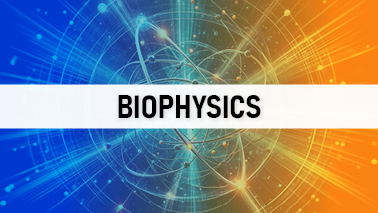
Biophysics is a branch of science that applies the principles and methods of physics to understand biological systems. It involves the quantitative analysis of biological processes and structures at various levels, from the molecular and cellular to the organismic and even the ecological levels. The ultimate goal of biophysics is to gain a deeper understanding of how physical principles govern the behavior of living organisms.
Important biophysical concepts include:
Molecular Biophysics: Focuses on the study of the physical principles underlying the structure and function of biological molecules such as proteins, nucleic acids, and lipids. Techniques like X-ray crystallography, nuclear magnetic resonance (NMR), and electron microscopy are often used to elucidate molecular structures.
Cell Biophysics: Investigates the physical properties of cells, including their mechanical properties, membrane dynamics, and intracellular processes. Atomic force microscopy and fluorescence microscopy are commonly employed in cell biophysics studies.
Biophysical Techniques: Encompasses a wide range of experimental techniques that allow scientists to probe biological systems quantitatively. Examples include spectroscopy, imaging, and various methods to measure forces, electrical potentials, and molecular dynamics.
Systems Biophysics: The study delves into the functioning of biological systems in their entirety, taking into account the interplay and dynamics of various components. This encompasses the examination of phenomena like signal transduction, neural networks, and the dynamics of complete ecosystems.
Computational Biophysics: Uses computational methods to model and simulate biological processes, providing insights into complex biological systems that may be challenging to study experimentally.
Biophysics plays a crucial role in advancing our understanding of fundamental biological phenomena, contributing to fields such as medicine, pharmacology, and bioengineering. By applying the principles of physics to biological systems, researchers can uncover the physical mechanisms that govern life processes, leading to the development of new technologies and medical treatments.
Tags
Condensed Matter Physics Conferences
Quantum Computing Conferences
Physics Conferences 2025 Asia
Physical Chemistry Conferences
Cosmology Conferences
Nanotechnology Conferences
Quantum Mechanics Conferences
Materials Science Conferences
Physics Conferences 2025 UK
Physics Conferences 2025
Physics Conferences
Nanotechnology Conferences 2025 Europe
Materials Chemistry Conferences
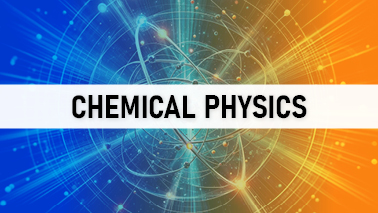
Chemical physics is a branch of physical chemistry that focuses on the application of physics principles and techniques to understand the fundamental properties and behavior of chemical systems. It involves the study of the physical principles governing chemical processes, molecular structures, and the interactions between atoms and molecules.
The following are some essential elements of chemical physics:
Molecular Structure and Spectroscopy: Chemical physicists investigate the structure of molecules and how they interact with electromagnetic radiation. Techniques such as spectroscopy (including infrared, UV-Visible, and nuclear magnetic resonance spectroscopy) are used to analyze the energy levels and transitions of molecules.
Chemical Kinetics: The study of reaction rates and mechanisms falls within the domain of chemical physics. This involves understanding how and why chemical reactions occur, as well as the factors that influence their speed and pathways.
Statistical Mechanics: Chemical physics utilizes statistical mechanics to comprehend the dynamics of extensive collections of particles, encompassing atoms and molecules. This encompasses the investigation of thermodynamics, the dispersion of molecular energies, and the statistical characteristics of molecular motion.
Quantum Chemistry: Quantum mechanics is a fundamental tool in chemical physics for understanding the electronic structure of atoms and molecules. Quantum chemistry explores the mathematical description of electrons and their behavior within chemical systems.
Surface Chemistry: Chemical physicists delve into the examination of the physical and chemical characteristics of surfaces, interfaces, and materials. This encompasses the exploration of phenomena like adsorption, catalysis, and the conduct of molecules when situated at surfaces.
Biophysical Chemistry: There is overlap between chemical physics and biophysics, especially in the study of molecular processes within biological systems. Understanding the physical principles of biomolecular interactions is crucial for advancements in fields like biochemistry and molecular biology.
Computational Chemistry: Chemical physicists often use computational methods and simulations to model the behavior of molecules and predict their properties. These simulations can provide valuable insights into complex chemical systems.
Chemical physics serves as a bridge between physics and chemistry, providing a deeper understanding of the physical nature of chemical phenomena. Researchers in this field contribute to the development of new materials, the understanding of molecular dynamics, and the optimization of chemical processes, among other applications.
Tags
Nuclear Physics Conferences
Quantum Computing Conferences
Particle Physics Conferences
Physics Conferences 2025 USA
Physics Conferences 2025 Europe
Nanotechnology Conferences 2025 Europe
Physics Conferences 2025 Asia
Nanotechnology Conferences
Materials Science Conferences
Materials Chemistry Conferences
Nanotechnology Conferences 2025 Europe
Condensed Matter Physics Conferences
Physical Chemistry Conferences

Communication Physics is an applied branch of physics that involves the study and application of physical principles to understand, develop, and optimize various communication systems. It encompasses a wide range of communication technologies, from traditional methods like mobile phone communication to cutting-edge quantum communication utilizing quantum entanglement.
Key Areas of Study:
Classical Communication Systems: The exploration of classical communication systems encompasses the examination of signal processing, modulation, and transmission principles. This field of study may entail delving into electromagnetic waves, information theory, and the development of effective communication protocols.
Quantum Communication: Exploration of quantum communication systems, leveraging the principles of quantum mechanics. Quantum communication often involves the phenomenon of quantum entanglement, where particles become correlated in such a way that the state of one particle instantly influences the state of the other, regardless of the distance between them.
Information Theory: Study of information theory, focusing on the quantification, storage, and communication of information. This includes understanding coding and decoding mechanisms for efficient data transmission.
Optical Communication: Research into optical communication systems, which utilize light for transmitting information. This could involve the study of fiber optics, lasers, and photonic technologies.
Wireless Communication: Examination of wireless communication systems, encompassing radio frequency communication, satellite communication, and other wireless technologies.
Communication Protocols: Development and analysis of communication protocols that facilitate the reliable and efficient exchange of information between devices.
Applications:
• telecommunications
• information technology
• quantum computing
• secure communication
Overall, Communication Physics plays a vital role in advancing the capabilities of communication systems, contributing to both classical and quantum communication technologies.
Tags
Nanotechnology Conferences 2025 Europe
Quantum Mechanics Conferences
Physics Conferences
Astrophysics Conferences
Quantum Computing Conferences
Physical Chemistry Conferences
Nuclear Physics Conferences
Materials Science Conferences
Materials Chemistry Conferences
Physics Conferences 2025 Europe
Cosmology Conferences
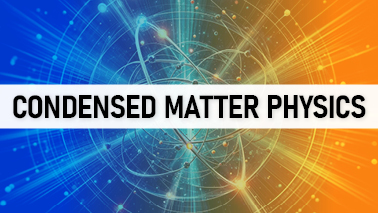
Condensed Matter Physics is a branch of physics that focuses on the study of the physical properties and behavior of condensed phases of matter. These phases include solids and liquids, where particles are densely packed and exhibit collective behavior. This field seeks to understand the macroscopic and microscopic properties of materials and the interactions between particles within them.
Here are key aspects and areas of study within Condensed Matter Physics:
• Structural Properties
• Electronic Properties
• Magnetic Properties
• Thermal Properties
• Superconductivity and Superfluidity
• Phase Transition
• Soft Condensed Matter
• Nanomaterials and Nanotechnology
• Topological Phases of Matter
Condensed Matter Physics has numerous practical applications, ranging from the development of new materials and technologies to advancements in electronics, energy storage, and quantum computing. Researchers in this field utilize experimental, theoretical, and computational approaches to unravel the mysteries of condensed matter and contribute to technological innovations.
Tags
Nanotechnology Conferences
Cosmology Conferences
Materials Chemistry Conferences
Physics Conferences 2025 UK
Quantum Computing Conferences
Nanotechnology Conferences 2025 Europe
Physics Conferences 2025 Europe
Quantum Mechanics Conferences
Physics Conferences 2025 Asia
Physics Conferences 2025
Condensed Matter Physics Conferences
Nanotechnology Conferences 2025 Europe
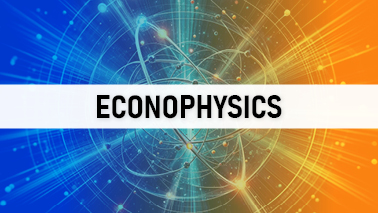
Econophysics is a multidisciplinary domain that utilizes principles and techniques from physics to study economic phenomena. Its objective is to examine economic systems and financial markets by employing the tools and models commonly used in physics. By utilizing statistical mechanics, network theory, and other mathematical approaches, econophysicists aim to gain a deeper understanding of intricate economic behaviors and market dynamics.
Econophysics delves into the study of market fluctuations, price movements, and the emergence of collective behaviors within economic systems. Its objective is to gain a more profound comprehension of the fundamental principles that govern these processes.
Some prominent types or areas of research within econophysics include:
Market Microstructure Models: The examination of the minute characteristics of financial markets, including the arrangement of orders, the influence on the market, and the fluctuation of prices at the level of each individual transaction, is a subject of study.
Agent-Based Modeling: Simulating economic systems involves creating models that mimic the actions of individual agents, such as investors or traders, and analyzing the resulting properties that emerge within the entire system.
Statistical Mechanics of Markets: Applying concepts from statistical mechanics to analyze the collective behavior of a large number of interacting components in financial markets, akin to the interactions of particles in a physical system.
Network Theory in Finance: Analyzing financial markets as complex networks, where nodes represent financial entities (e.g., stocks) and edges represent relationships or interactions between them.
Multifractal Analysis: Studying the multifractal nature of financial time series to understand the inherent complexity and irregularity in market dynamics.
These different approaches within econophysics contribute to a broader understanding of economic phenomena, and researchers often combine methods from various types to gain comprehensive insights into the complexities of financial markets.
Tags
Particle Physics Conferences
Physics Conferences 2025 USA
Physics Conferences 2025
Physics Conferences
Medical Physics Conferences
Quantum Computing Conferences
Physics Conferences 2025 Europe
Astrophysics Conferences
Quantum Mechanics Conferences
Materials Chemistry Conferences
Physics Conferences 2025 Asia
Physics Conferences 2025 UK
Nanotechnology Conferences

There were several emerging trends and areas of interest in the field of superconductivity.
These are some emerging trends:
High-Temperature Superconductors (HTS): Ongoing investigations into materials that demonstrate superconductivity at elevated temperatures, rendering them more feasible for diverse applications such as power transmission and medical imaging.
Iron-Based Superconductors: Exploration of iron-based superconductors as an alternative to traditional cuprate high-temperature superconductors, with a focus on understanding their properties and potential applications.
Topological Superconductors: Investigation of topological superconductors that exhibit unique properties, including protected surface states, which may have applications in quantum computing and other novel electronic devices.
2D Superconductors: Research into superconducting materials that are only one or two atoms thick, known as 2D superconductors. These materials may have unique electronic properties and applications in nanoelectronics.
Quantum Computing with Superconductors: The incorporation of superconducting qubits plays a pivotal role in the advancement of quantum computers. Superconducting circuits offer a foundation for the formation and manipulation of quantum states.
Magnetic Superconductors: Exploration of superconductors that coexist with magnetic order, leading to the emergence of novel phenomena such as unconventional superconductivity and the possibility of creating new types of devices.
Superconducting Electronics (SQUIDs): Advancements in superconducting quantum interference devices (SQUIDs) for applications in highly sensitive detectors, such as those used in medical imaging and geophysical exploration.
Energy Applications: Research into practical applications of superconductivity in power transmission and storage to reduce energy losses in electrical systems.
Superconductivity in Extreme Conditions: Exploration of superconductivity under extreme conditions, including high pressures, to discover new materials with enhanced superconducting properties.
Machine Learning and Materials Discovery: The acceleration of the discovery process for new superconducting materials can be achieved through the utilization of machine learning algorithms. These algorithms predict the properties of these materials by analyzing existing data.
Hybrid Systems: Integration of superconductors with other materials and technologies, such as semiconductors and nanoelectronics, to create hybrid systems with enhanced functionality.
These trends reflect the ongoing efforts to advance our understanding of superconductivity and to develop practical applications that can benefit various industries. Researchers and engineers in the field are continually pushing the boundaries of what is possible with superconducting materials.
Tags
Physics Conferences 2025
Medical Physics Conferences
Particle Physics Conferences
Physical Chemistry Conferences
Materials Science Conferences
Physics Conferences
Cosmology Conferences
Physics Conferences 2025 Europe
Materials Chemistry Conferences
Nuclear Physics Conferences
Nanotechnology Conferences 2025 Europe
Nanotechnology Conferences
Quantum Computing Conferences
Physics Conferences 2025 USA
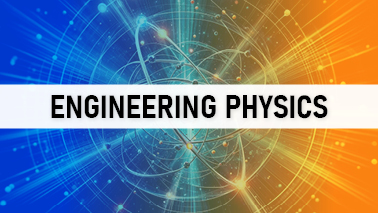
Engineering Physics is an interdisciplinary field that applies the principles of physics to solve complex engineering problems. It involves a combination of theoretical and practical knowledge from both physics and engineering
These are the main principles and characteristics of engineering physics:
Interdisciplinary Nature: Engineering Physics combines principles from physics with engineering concepts to offer a holistic comprehension of both disciplines. This interdisciplinary methodology empowers engineers to address a diverse array of challenges.
Core Physics Concepts: Students in Engineering Physics study fundamental physics concepts such as classical mechanics, electromagnetism, thermodynamics, quantum mechanics, and relativity. This strong foundation in physics distinguishes engineering physicists from other engineering disciplines.
Materials Science: Engineering Physics often involves the study of materials science, examining the properties and behaviors of materials for applications in engineering. This includes the development of new materials with specific characteristics.
Electronics and Photonics: The field encompasses electronics and photonics, involving the study of electronic devices, semiconductor physics, and the use of light for various applications, such as in telecommunications and optics.
Medical Physics: Some engineering physicists specialize in medical physics, where they apply their knowledge to the development of medical imaging technologies, radiation therapy, and other healthcare-related applications.
Engineering Physics applications:
• Electronics and Telecommunications
• Photonics and Optics
• Renewable Energy
• Nanotechnology
• Materials Science and Engineering
• Medical Physics
• Aerospace and Aviation
• Computational Physics and Simulation
• Energy Systems
• Environmental Monitoring
• Instrumentation and Measurement
• Quantum Technologies
• Automotive Industry
• Research and Development
Engineering physicists are essential in connecting fundamental scientific principles with practical engineering applications. With their wide range of skills, they are able to make valuable contributions to a variety of industries, including electronics, telecommunications, renewable energy, and healthcare.
Tags
Physics Conferences 2025 USA
Condensed Matter Physics Conferences
Nanotechnology Conferences 2025 Europe
Astrophysics Conferences
Physics Conferences 2025 Europe
Nanotechnology Conferences 2025 Europe
Materials Science Conferences
Physics Conferences 2025 Asia
Physical Chemistry Conferences
Quantum Computing Conferences
Materials Chemistry Conferences
Nuclear Physics Conferences
Cosmology Conferences
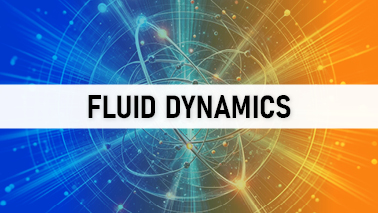
Fluid dynamics is a branch of physics and engineering that deals with the study of fluids, which includes liquids and gases, and their motion. It is a sub-discipline of fluid mechanics, which is a broader field that encompasses the study of fluids at rest and in motion. Fluid dynamics plays a crucial role in understanding and predicting the behavior of fluids in various physical scenarios.
These are some essential ideas and features of fluid dynamics:
Navier-Stokes Equations: The Navier-Stokes equations are the fundamental equations that govern the motion of fluids. These equations, which are partial differential equations, depict the conservation of mass and the movement of fluids, considering both viscosity and pressure.
Incompressible vs. Compressible Flows: Fluid dynamics classifies flows into two categories: incompressible flows, where the density of the fluid remains constant, and compressible flows, where the density undergoes significant changes. The selection of either model is contingent upon the prevailing flow conditions.
Laminar and Turbulent Flows: Fluid flows can be categorized as laminar or turbulent. Laminar flows are characterized by smooth, orderly motion, while turbulent flows exhibit chaotic, irregular motion. The transition from laminar to turbulent flow is influenced by factors such as velocity and fluid viscosity.
Boundary Layers: The boundary layer is the thin layer of fluid adjacent to a solid surface. Understanding boundary layer dynamics is crucial in predicting drag forces, heat transfer, and other effects on immersed objects.
Bernoulli's Principle: Bernoulli's principle states that in an inviscid, incompressible fluid, an increase in fluid velocity is accompanied by a decrease in pressure. This principle is often used to explain lift in aerodynamics.
Drag and Lift: Fluid dynamics is a fundamental aspect that must be comprehended in order to analyze the impact of drag and lift forces on objects as they traverse through fluids. This knowledge is of utmost importance in the development and design of various structures, including vehicles and aircraft.
Fluid Flow Around Objects: Fluid dynamics is applied to study the flow of fluids around objects, such as airfoils, ships, and buildings. This involves predicting forces, pressure distributions, and potential structural effects.
Shock Waves: In compressible flows, shock waves can form when the fluid velocity exceeds the speed of sound. Fluid dynamicists study the formation and behavior of shock waves, which have implications in aerodynamics and astrophysics.
Computational Fluid Dynamics (CFD): CFD involves the numerical simulation of fluid flow and heat transfer using computer algorithms. It has become a powerful tool for engineers and scientists to analyze and optimize complex fluid dynamic problems.
Multiphase Flows: Fluid dynamics is applied to study multiphase flows, where two or more phases (liquid, gas, solid) coexist. Examples include the dynamics of bubbles in liquids and the behavior of particulate flows.
Environmental Fluid Dynamics: Fluid dynamics is relevant in understanding natural phenomena, such as ocean currents, atmospheric flows, and river dynamics. Environmental fluid dynamics helps analyze the impact of human activities on natural fluid systems.
Fluid-Structure Interaction: Fluid-structure interaction deals with the interaction between fluids and adjacent structures. It is important in the design of structures subject to fluid forces, such as bridges and offshore platforms.
Fluid dynamics is a broad and interdisciplinary field with applications in physics, engineering, environmental science, and various industrial sectors. The principles of fluid dynamics are foundational to the design and optimization of technologies ranging from aircraft and automobiles to pipelines and biomedical devices.
Tags
Astrophysics Conferences
Materials Chemistry Conferences
Nuclear Physics Conferences
Physics Conferences 2025 Asia
Materials Science Conferences
Physics Conferences 2025 Europe
Physics Conferences 2025 UK
Medical Physics Conferences
Physical Chemistry Conferences
Quantum Mechanics Conferences
Cosmology Conferences
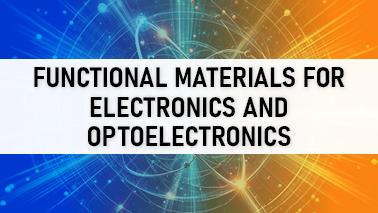
Functional materials for electronics and optoelectronics play a critical role in the development of advanced devices that are used in various technological applications. These materials exhibit unique electronic, optical, and magnetic properties that enable the functioning of electronic components and devices.
Here are some key functional materials in the field of electronics and optoelectronics:
• Semiconductors
• Conducting Polymers
• 2D Materials
• Quantum Dots
• Perovskite Materials
• Organic Electronics
• Ferroelectric Materials
• Piezoelectric Materials
• Transparent Conductive Materials
• Magnetic Materials
• Superconductors
• Photonic Crystals
• Plasmonic Materials
• Topological Insulators
• Memory Materials
These functional materials contribute to the development of electronic and optoelectronic devices with enhanced performance, energy efficiency, and novel functionalities, driving advancements in various technological fields. Researchers continue to explore and develop new materials to push the boundaries of what is possible in electronics and photonics.
Tags
Physics Conferences 2025 USA
Nanotechnology Conferences 2025 Europe
Quantum Computing Conferences
Nuclear Physics Conferences
Physics Conferences 2025
Physics Conferences 2025 Asia
Physics Conferences 2025 Europe
Particle Physics Conferences
Materials Chemistry Conferences
Nanotechnology Conferences
Materials Science Conferences
Cosmology Conferences
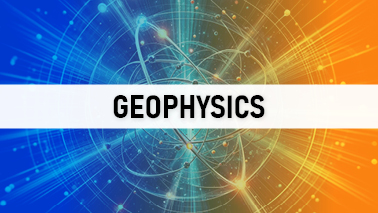
Geophysics is a branch of Earth science that applies principles and methods of physics to the study of the Earth and its subsurface. It involves the investigation of physical properties and processes occurring within the Earth, using a variety of measurement techniques. Geophysics is employed in a wide range of applications, including mineral exploration, environmental studies, earthquake monitoring, and understanding the structure of the Earth's interior.
Here are some major types of geophysics:
Seismology: Seismology involves the study of seismic waves, which are vibrations that travel through the Earth in response to natural events like earthquakes or human-induced activities.
Gravity and Gravimetry: Gravity measurements are used to study the distribution of mass within the Earth, and gravimetry involves measuring variations in gravitational acceleration.
Magnetic Methods: Magnetic surveys measure variations in the Earth's magnetic field to detect subsurface features with magnetic properties.
Electrical and Electromagnetic Methods: These methods involve measuring the electrical properties of subsurface materials, such as resistivity or conductivity.
Seismic Reflection and Refraction: These methods use seismic waves to investigate subsurface structures, with reflection focusing on boundaries between different layers, and refraction analyzing wave velocity changes.
Well Logging: Well logging involves recording measurements in boreholes to characterize the properties of subsurface rocks and fluids.
Hydrogeophysics: Hydrogeophysics combines geophysical methods with hydrology to study groundwater systems.
Environmental and Engineering Geophysics: Applied geophysics for environmental and engineering purposes, including detecting subsurface utilities, assessing soil properties for construction, and monitoring environmental pollution.
Geophysics is a diverse field that plays a crucial role in advancing our understanding of the Earth's structure, dynamics, and natural resources. The combination of various geophysical methods allows scientists to probe the subsurface in different ways, providing valuable information for a wide range of applications.
Tags
Condensed Matter Physics Conferences
Materials Chemistry Conferences
Physics Conferences 2025 Europe
Nuclear Physics Conferences
Physics Conferences
Physics Conferences 2025 UK
Physical Chemistry Conferences
Quantum Computing Conferences
Physics Conferences 2025 USA
Particle Physics Conferences
Cosmology Conferences
Quantum Mechanics Conferences
Nanotechnology Conferences
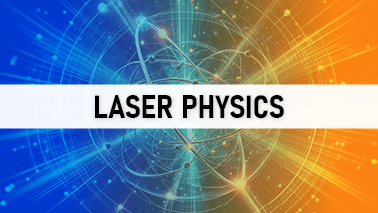
Laser physics is a branch of physics that focuses on the study, development, and application of lasers (Light Amplification by Stimulated Emission of Radiation). Lasers are devices that emit coherent and focused beams of light with unique properties, making them valuable in various scientific, industrial, medical, and technological applications.
Principles of Laser Operation: Stimulated Emission: The basic principle of laser operation involves the process of stimulated emission, where photons are emitted due to the stimulation of already excited atoms or molecules.
Population Inversion: Laser action requires a population inversion, where more atoms or molecules are in an excited state than in a lower energy state.
Amplification: The amplification of light through multiple stimulated emissions occurs within an optical cavity, leading to the generation of a coherent and intense laser beam.
Types of Lasers:
• Gas Lasers
• Solid-State Lasers
• Dye Lasers
• Fiber Lasers
• Semiconductor Lasers
Key Laser Components:
• Gain Medium
• Optical Cavity
• Pump Source
• Coherence and Monochromaticity
Applications of Lasers:
• Medical Applications
• Communication
• Material Processing
• Scientific Research
• Entertainment
• Military and Defense
• Environmental Sensing
Laser physics continues to advance, leading to the development of new laser technologies and applications. The precision, coherence, and versatility of lasers make them indispensable tools in a wide range of scientific, industrial, and technological endeavors.
Tags
Nanotechnology Conferences 2025 Europe
Physics Conferences 2025 UK
Nanotechnology Conferences 2025 Europe
Astrophysics Conferences
Materials Science Conferences
Materials Chemistry Conferences
Physics Conferences
Physics Conferences 2025 USA
Particle Physics Conferences
Physics Conferences 2025 Asia
Nanotechnology Conferences
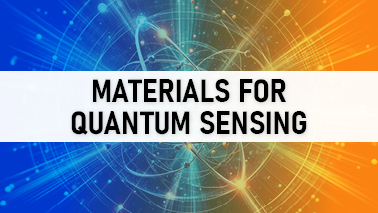
Quantum sensing is an emerging field that leverages the principles of quantum mechanics to achieve highly sensitive measurements in various applications. The materials used in quantum sensing devices play a crucial role in enabling these advanced capabilities.
Following are some key materials commonly employed in quantum sensing:
Superconductors: Superconducting materials are employed in the fabrication of superconducting circuits, which demonstrate absolute absence of electrical resistance and have the capability to sustain continuous currents.
Quantum Dots: Quantum dots are semiconductor nanocrystals with unique quantum properties, such as size-dependent energy levels.
Diamonds with Nitrogen-Vacancy (NV) Centers: Diamonds containing NV centers have unique quantum properties that make them excellent for sensing applications.
Cold Atoms: Cold atoms, commonly found as Bose-Einstein condensates or ultra-cold gases, demonstrate quantum phenomena and possess a remarkable susceptibility to external influences.
Metamaterials: Metamaterials are engineered materials with properties not found in nature, often designed to manipulate electromagnetic waves.
Graphene: Graphene exhibits distinctive electronic properties as it consists of a solitary layer of carbon atoms organized in a hexagonal lattice.
Optical Fibers: Optical fibers can be infused or coated with certain materials to enhance their sensitivity to changes in temperature, strain, or other physical parameters.
Photonic Crystals: Photonic crystals have periodic structures that create bandgaps for certain wavelengths of light.
Different materials serve as the building blocks for a range of quantum sensing devices, each designed for specific purposes. As the field progresses, scientists are actively investigating novel materials and combinations to improve the precision and capabilities of quantum sensors.
Tags
Physics Conferences 2025 Europe
Physical Chemistry Conferences
Physics Conferences
Physics Conferences 2025 Asia
Nanotechnology Conferences 2025 Europe
Nanotechnology Conferences 2025 Europe
Condensed Matter Physics Conferences
Nuclear Physics Conferences
Medical Physics Conferences
Physics Conferences 2025
Cosmology Conferences
Physics Conferences 2025 UK
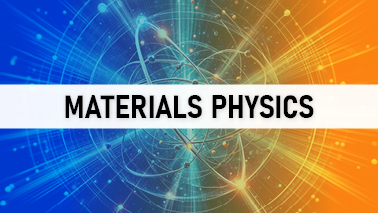
Materials physics is a branch of physics that focuses on the study of the physical properties and behaviors of materials. It involves understanding the fundamental principles that govern the structure, properties, and performance of materials, as well as developing new materials with specific desired characteristics.
Key elements in medical physics include the following:
Diagnostic Medical Physics:
Therapeutic Medical Physics:
Nuclear Medicine:
Health Physics:
Biomedical Engineering:
Dosimetry:
Medical Imaging Informatics:
Materials physicists use experimental techniques, theoretical models, and computational simulations to advance our understanding of materials and contribute to the development of new technologies and applications. This field plays a crucial role in shaping advancements in materials science and engineering.
Tags
Physical Chemistry Conferences
Particle Physics Conferences
Physics Conferences 2025 USA
Physics Conferences 2025 Asia
Quantum Computing Conferences
Nanotechnology Conferences 2025 Europe
Physics Conferences 2025 Europe
Physics Conferences 2025
Quantum Mechanics Conferences
Materials Chemistry Conferences
Condensed Matter Physics Conferences
Materials Science Conferences
Astrophysics Conferences

Physical chemistry is a branch of chemistry that combines principles of physics and chemistry to understand how matter behaves on a molecular and atomic level, and how chemical reactions occur. It provides insights into the physical properties and behavior of chemical systems.
The main components of physical chemistry are as follows:
Thermodynamics:
• First Law of Thermodynamics: Describes the conservation of energy in chemical processes.
• Second Law of Thermodynamics: Introduces concepts such as entropy, Gibbs free energy, and spontaneity of reactions.
• Thermochemistry: Studies the heat changes associated with chemical reactions and phase transitions.
Quantum Chemistry:
• Wave-Particle Duality: Describes the dual nature of particles, including electrons.
• Schrödinger Equation: Fundamental equation describing the behavior of electrons in atoms and molecules.
• Quantum Numbers: Define the energy levels, orbital shapes, and orientations of electrons.
• Atomic and Molecular Orbitals: Describes the spatial distribution of electrons in atoms and molecules.
Chemical Kinetics:
• Reaction Rates: Studies the speed at which chemical reactions occur.
• Reaction Mechanisms: Explores the detailed steps by which a chemical reaction proceeds.
• Catalysis: Examines the factors influencing the rate of reactions, including catalysis.
Statistical Mechanics:
• Microstates and Macrostates: Describes the statistical behavior of particles in a system.
• Boltzmann Distribution: Relates the energy distribution of particles in a system to temperature.
• Partition Function: Quantifies the thermodynamic properties of a system.Electrochemistry:
• Redox Reactions: Involves the transfer of electrons in chemical reactions.
• Nernst Equation: Relates the concentrations of reactants and products to the cell potential.
• Electrochemical Cells: Explores the use of chemical reactions to generate electrical energy.
Spectroscopy:
• UV-Visible, IR, NMR Spectroscopy: Techniques to study the interaction of matter with electromagnetic radiation.
• Rotational and Vibrational Spectroscopy: Provides information about molecular structure and bond vibrations.
Surface Chemistry:
• Adsorption: Describes the adherence of molecules to the surface of a solid or liquid.
• Catalysis: Studies the role of surfaces in catalyzing chemical reactions.
Solid State Chemistry:
• Crystal Structures: Describes the arrangement of atoms or ions in a solid.
• Band Theory: Explains the electronic structure of solids.
Molecular Dynamics and Statistical Thermodynamics:
• Molecular Dynamics Simulations: Use computer simulations to study the movements of atoms and molecules.
• Statistical Thermodynamics: Connects the macroscopic properties of a system to the microscopic behavior of its particles.
Physical chemistry provides a theoretical and experimental foundation for understanding the fundamental principles governing chemical systems. It plays a crucial role in advancing various fields, including materials science, biochemistry, and environmental chemistry. Researchers in physical chemistry use mathematical models, laboratory experiments, and computational techniques to explore the behavior of matter and its transformations.
Tags
Condensed Matter Physics Conferences
Physics Conferences 2025 Europe
Physics Conferences 2025
Physics Conferences 2025 Asia
Cosmology Conferences
Nanotechnology Conferences 2025 Europe
Nanotechnology Conferences
Particle Physics Conferences
Astrophysics Conferences
Physics Conferences 2025 USA
Nanotechnology Conferences 2025 Europe
Nuclear Physics Conferences
Physics Conferences
Materials Science Conferences

Energy storage and conversion materials are substances or compounds specifically designed and engineered to play a crucial role in capturing, storing, and releasing energy efficiently. These materials are fundamental components in various technologies aimed at addressing energy challenges, improving sustainability, and enhancing the performance of devices and systems.
Key characteristics of materials for energy conversion and storage are as follows:
Advanced Battery Technologies: The advancement of battery materials with enhanced energy density, safety, and charging capabilities, such as lithium-ion batteries, is crucial for the development of high-capacity and long-lasting power storage solutions.
Solid-State Batteries: Research and development of solid-state batteries, which replace traditional liquid electrolytes with solid electrolytes to enhance safety, energy density, and cycle life.
Lithium-Sulfur Batteries: The investigation into lithium-sulfur batteries as a substitute for lithium-ion batteries involves examining their superior energy density and potential cost benefits.
Beyond Lithium-Ion Chemistries: Investigation of alternative battery chemistries beyond lithium, such as sodium-ion, potassium-ion, and magnesium-ion batteries, to address resource availability and cost concerns.
Supercapacitors and Ultracapacitors: Advancements in materials for supercapacitors and ultracapacitors, aiming for high power density, rapid charge/discharge cycles, and improved energy storage.
Flow Battery Materials: Research has been conducted on materials for flow batteries, specifically redox flow batteries, which exhibit promising potential for utilization in large-scale energy storage and grid-level systems.
Hydrogen Storage Materials: Development of materials for storing and releasing hydrogen efficiently, such as advanced metal hydrides and nanoporous materials for hydrogen storage.
Catalysts for Fuel Cells: Advancements in catalyst materials for fuel cells to enhance their efficiency, durability, and cost-effectiveness for clean energy conversion
Nanomaterials and Nanostructures: Integration of nanomaterials and nanostructures in energy storage and conversion devices to improve their performance, stability, and efficiency.
Biodegradable Energy Storage: Research on environmentally friendly and biodegradable materials for energy storage devices, addressing sustainability concerns.
The ongoing endeavors to create materials that can enhance the effectiveness, sustainability, and affordability of energy storage and conversion technologies are exemplified by these factors. Scientists and experts in this domain are diligently striving to overcome obstacles and lay the groundwork for the forthcoming era of energy materials.
Tags
Physics Conferences
Materials Chemistry Conferences
Astrophysics Conferences
Physics Conferences 2025 Europe
Materials Science Conferences
Physics Conferences 2025 USA
Physics Conferences 2025 UK
Condensed Matter Physics Conferences
Quantum Computing Conferences
Quantum Mechanics Conferences
Physics Conferences 2025 Asia
Medical Physics Conferences
Nanotechnology Conferences 2025 Europe
Physical Chemistry Conferences
Cosmology Conferences

Magnetic and spintronic materials are crucial components in the development of technologies that rely on the manipulation of electron spin for information storage and processing. Understanding and engineering these materials is fundamental to advancing the field of spintronics.
Key characteristics of spintronic and magnetic materials are as follows:
• Antiferromagnetic Materials
• Ferrimagnetic Materials
• Ferromagnetic Materials
• Soft and Hard Magnetic Materials
• Permanent Magnets
• Spintronic Materials
• Half Metals
• Graphene and 2D Materials
• Spin-Orbit Coupling Materials
• Spin Hall Effect Materials
These materials are at the forefront of driving technological progress by leveraging the spin degree of freedom of electrons, enabling the creation of more advanced and efficient electronic devices.
Ongoing research in this domain is dedicated to uncovering new materials and devices that can fully harness the potential of spintronics in information processing and storage.
Tags
Physics Conferences 2025 USA
Quantum Computing Conferences
Materials Chemistry Conferences
Particle Physics Conferences
Medical Physics Conferences
Physics Conferences
Physics Conferences 2025 UK
Quantum Mechanics Conferences
Nanotechnology Conferences 2025 Europe
Physics Conferences 2025 Europe
Physics Conferences 2025
Nanotechnology Conferences 2025 Europe

Quantum information processing relies on the principles of quantum mechanics to perform operations and store information using quantum bits or qubits. Various physical systems and materials are being explored for the implementation of qubits and other components in quantum information processing. Here are some key materials and platforms used in quantum information processing:
Superconductors: Superconductors are used to create and manipulate superconducting qubits.
Semiconductor Quantum Dots: Quantum dots are semiconductor-based artificial atoms that trap and control individual electrons, serving as qubits.
Trapped Ions: Individual ions are trapped and manipulated using electromagnetic fields to serve as qubits.
Topological Insulators: Topological insulators are materials with nontrivial surface states that are robust against certain perturbations.
Nitrogen-Vacancy (NV) Centers in Diamond: NV centers in diamond are atomic defects that trap and manipulate electron spins.
Superfluids and Bose-Einstein Condensates: Cold atomic gases can form superfluids or Bose-Einstein condensates, which can be used for quantum simulation and computation.
Majorana Fermions in Topological Superconductors: Majorana fermions are exotic particles that can emerge at the ends of topological superconductors.
Quantum Dots in Silicon: Silicon-based quantum dots can be used as qubits in a solid-state environment.
Cold Atoms in Optical Lattices: Cold atoms trapped in optical lattices can be used to simulate quantum many-body systems.
The field of quantum information processing remains an active and dynamic area of study, as researchers investigate various physical systems and materials in order to construct reliable and scalable quantum computers and communication systems. The progress made in materials science is crucial for the advancement of practical quantum technologies.
Tags
Physics Conferences 2025 UK
Medical Physics Conferences
Quantum Mechanics Conferences
Physics Conferences 2025
Quantum Computing Conferences
Physics Conferences 2025 Asia
Materials Chemistry Conferences
Cosmology Conferences
Nanotechnology Conferences
Astrophysics Conferences
Nuclear Physics Conferences
Materials Science Conferences
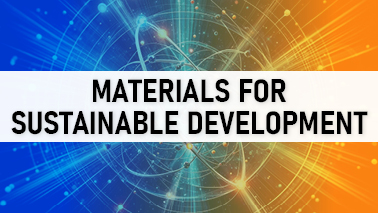
Materials used in sustainable development aim to meet present needs without compromising the ability of future generations to meet their own needs. Sustainable materials contribute to environmental, social, and economic well-being. The following are a few essential resources frequently linked to sustainable development:
Recycled Materials: Using recycled materials helps reduce the demand for virgin resources and minimizes waste.
Bamboo: Bamboo is a fast-growing, renewable resource that requires minimal pesticides and fertilizers.
Recycled Plastic: Repurposing plastic waste helps divert it from landfills and reduces the environmental impact of plastic production.
Cork: Cork is harvested from the bark of cork oak trees without harming the tree, making it a renewable and sustainable material.
Hemp: Hemp is a versatile and fast-growing plant that requires minimal water and no pesticides.
Reclaimed Wood: Reclaimed wood comes from salvaged sources, reducing the need for new timber harvesting and preventing waste.
Organic Cotton: Organic cotton is grown without synthetic pesticides or fertilizers, promoting soil health and reducing environmental impact.
Bioplastics: Bioplastics are derived from renewable resources, such as plant starch, and are designed to be more environmentally friendly than traditional plastics.
Recycled Rubber: Recycling rubber from tires and other sources helps prevent the buildup of waste in landfills.
Solar Photovoltaic (PV) Panels: Solar panels convert sunlight into electricity, providing a clean and renewable energy source.
These materials contribute to sustainable development by minimizing environmental impact, promoting responsible resource use, and supporting social and economic well-being. The adoption of such materials is integral to achieving a more sustainable and resilient future.
Tags
Physics Conferences 2025
Particle Physics Conferences
Physics Conferences 2025 USA
Physics Conferences 2025 Asia
Nanotechnology Conferences
Materials Science Conferences
Nuclear Physics Conferences
Cosmology Conferences
Materials Chemistry Conferences
Medical Physics Conferences
Nanotechnology Conferences 2025 Europe
Physics Conferences
Quantum Mechanics Conferences
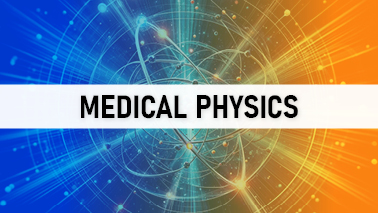
Medical physics is a branch of applied physics that deals with the application of physical principles to medicine and healthcare. Medical physicists work at the intersection of physics, engineering, and medicine, applying their expertise to ensure the safe and effective use of medical technologies for patient diagnosis and treatment.
Key elements in medical physics include the following:
Diagnostic Medical Physics:
Radiological Imaging: Medical physicists play a crucial role in the development, optimization, and quality assurance of diagnostic imaging techniques such as X-ray, computed tomography (CT), magnetic resonance imaging (MRI), ultrasound, and nuclear medicine.
Radiation Protection: Ensuring patient and staff safety by managing radiation exposure risks and implementing radiation protection measures.
Therapeutic Medical Physics:
Radiation Therapy: Medical physicists contribute to the planning and delivery of radiation therapy for cancer treatment. They optimize treatment plans, ensure accurate dose delivery, and maintain the safety and quality of radiation therapy equipment.
Brachytherapy: Involves the use of sealed radioactive sources placed directly into or near the treatment area. Medical physicists are involved in planning and ensuring the proper delivery of brachytherapy.
Nuclear Medicine:
Diagnostic Imaging: Medical physicists work with nuclear medicine physicians to develop and optimize imaging techniques using radioactive tracers for the diagnosis and monitoring of various medical conditions.
Radiopharmaceuticals: Involves the use of radioactive drugs for diagnostic and therapeutic purposes, and medical physicists contribute to their safe use.
Health Physics:
Radiation Safety: Medical physicists are involved in monitoring and maintaining safe levels of radiation exposure for patients, healthcare workers, and the public.
Regulatory Compliance: Ensuring compliance with radiation safety regulations and standards.
Biomedical Engineering:
Medical Equipment Management: Medical physicists contribute to the selection, calibration, and quality assurance of medical equipment, such as linear accelerators, MRI machines, and other diagnostic and therapeutic devices.
Technology Assessment: Evaluating new technologies and techniques for their clinical efficacy and safety.
Dosimetry:
Dose Measurement: Medical physicists measure and analyze radiation doses delivered to patients during diagnostic and therapeutic procedures.
Treatment Planning: In radiation therapy, medical physicists are involved in developing treatment plans that maximize the dose to the target while minimizing exposure to surrounding healthy tissues.
Medical Imaging Informatics:
Data Management: Handling and analyzing large volumes of medical imaging data for diagnostic and research purposes.
Image Processing: Applying advanced computational techniques to enhance and analyze medical images.
Medical physicists work closely with healthcare professionals, including radiologists, oncologists, and technologists, to ensure the safe and effective use of medical technologies for patient care. Their role is critical in advancing medical science and improving patient outcomes through the application of physics principles in the healthcare field.
Tags
Nanotechnology Conferences 2025 Europe
Nuclear Physics Conferences
Medical Physics Conferences
Particle Physics Conferences
Nanotechnology Conferences
Materials Science Conferences
Physical Chemistry Conferences
Nanotechnology Conferences 2025 Europe
Quantum Computing Conferences
Condensed Matter Physics Conferences
Quantum Mechanics Conferences
Physics Conferences 2025 Europe
Materials Chemistry Conferences
Astrophysics Conferences
Physics Conferences 2025 UK
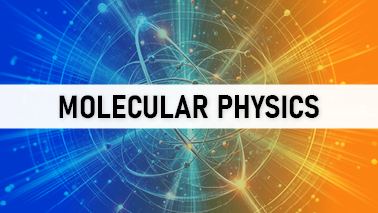
Molecular physics is a branch of physics that focuses on the study of the physical properties and behavior of molecules, which are the smallest units of chemical compounds. This field explores the fundamental principles that govern the structure, dynamics, and interactions of molecules.
Several important facets of molecular physics are below:
Molecular Structure:
• Chemical Bonding
• Geometrical Structure
Spectroscopy:
• Rotational Spectroscopy
• Vibrational Spectroscopy
Electronic Structure:
• Electronic Transitions
• Molecular Orbitals
Molecular Dynamics:
• Molecular Motion
• Brownian Motion
Chemical Kinetics:
• Reaction Dynamics
• Reaction Intermediates
Molecular Thermodynamics:
• Thermal Properties
• Entropy and Enthalpy
• Intermolecular Forces
• Van der Waals Forces
• Hydrogen Bonding
Molecular Spectrometry:
• Mass Spectrometry
• Photoelectron Spectroscopy
Computational Molecular Physics:
• Quantum Chemistry
• Molecular Modeling
Molecular physics plays a crucial role in advancing our understanding of chemical processes, material properties, and the behavior of molecules in various environments. It has applications in chemistry, biology, environmental science, and materials science, contributing to the development of new materials and technologies.
Tags
Materials Science Conferences
Astrophysics Conferences
Quantum Mechanics Conferences
Nanotechnology Conferences 2025 Europe
Physics Conferences 2025 UK
Condensed Matter Physics Conferences
Materials Chemistry Conferences
Physics Conferences 2025 USA
Physics Conferences 2025 Asia
Physics Conferences 2025 Europe
Particle Physics Conferences
Physics Conferences 2025

Nanotechnology is a multidisciplinary field that involves manipulating matter at the nanoscale, typically dealing with structures and devices with dimensions ranging from 1 to 100 nanometers. This field combines principles from physics, chemistry, biology, materials science, and engineering to create and manipulate nanoscale structures with unique properties and functionalities.
These are a few important elements of nanotechnology:
Nanomaterials:
• Nanoparticles: Particles with dimensions at the nanoscale, often displaying unique properties compared to their bulk counterparts. Examples include quantum dots, nanotubes, and nanowires.
• Nanocomposites: Materials composed of two or more distinct nanoscale components, combining their properties to achieve enhanced functionalities.
Nanofabrication:
• Top-Down Approaches: Techniques for creating nanostructures by reducing the size of larger structures. Examples include photolithography and electron beam lithography.
• Bottom-Up Approaches: Building nanostructures by assembling smaller components, such as self-assembly and molecular assembly techniques.
Nanodevices:
• Nanosensors: Devices that detect and measure physical, chemical, or biological properties at the nanoscale. Examples include biosensors and gas sensors.
• Nanoelectronics: Developing electronic components and devices with nanoscale features, such as nanotransistors and nanomemory devices.
Nanomedicine:
• Drug Delivery: Using nanoscale carriers to deliver drugs to specific cells or tissues, improving precision and reducing side effects.
• Diagnostic Imaging: Employing nanoscale materials for contrast agents in medical imaging techniques, enhancing resolution and sensitivity.
Nanotechnology in Energy:
• Nanomaterials for Energy Storage: Enhancing the performance of batteries and capacitors using nanomaterials for increased capacity and efficiency.
• Nanoscale Photovoltaics: Developing solar cells with improved efficiency and reduced costs through the use of nanomaterials.
Nanotechnology in Electronics:
• Quantum Dots: Nanoscale semiconductor particles that exhibit quantum mechanical properties, used in displays and imaging technologies.
• Nanoelectromechanical Systems (NEMS): Devices that integrate electrical and mechanical functionalities at the nanoscale.
Nanotechnology has the potential to revolutionize various industries and significantly impact medicine, electronics, energy, and materials science. As researchers continue to explore the capabilities of nanotechnology, ongoing efforts are made to understand and address potential challenges, ensuring the responsible development and application of nanoscale technologies.
Tags
Materials Chemistry Conferences
Physics Conferences 2025 USA
Cosmology Conferences
Medical Physics Conferences
Particle Physics Conferences
Astrophysics Conferences
Nanotechnology Conferences 2025 Europe
Physics Conferences 2025 UK
Physics Conferences 2025
Nuclear Physics Conferences
Nanotechnology Conferences 2025 Europe
Quantum Mechanics Conferences
Physical Chemistry Conferences
Condensed Matter Physics Conferences
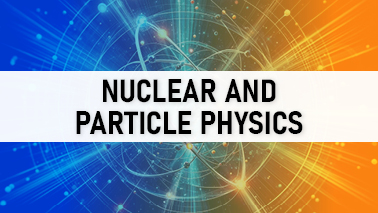
Nuclear and particle physics are two closely related branches of physics that focus on understanding the fundamental constituents of matter, their interactions, and the forces that govern their behavior.
Here's an overview of each field:
Nuclear Physics:
Nuclear Structure:
Nuclear Models: The study of different models (e.g., shell model, liquid drop model) that describe the structure and behavior of atomic nuclei.
Nuclear Reactions:
Fusion and Fission: Investigating the processes of nuclear fusion (combining atomic nuclei) and fission (splitting atomic nuclei) that release or absorb large amounts of energy.
Radioactive Decay:
Alpha, Beta, Gamma Decay: Understanding the various modes of radioactive decay and the emission of particles and electromagnetic radiation.
Nuclear Astrophysics:
Stellar Nucleosynthesis: Studying nuclear reactions in stars that produce elements and contribute to the chemical composition of the universe.
Nuclear Spectroscopy:
Gamma-ray Spectroscopy: Analyzing the energy spectra of gamma rays emitted during nuclear transitions, providing information about nuclear structure.
Nuclear Medicine:
Medical Imaging and Treatment: Utilizing radioactive isotopes for diagnostic imaging (e.g., positron emission tomography, single-photon emission computed tomography) and cancer treatment.
Particle Physics:
Elementary Particles:
Quarks and Leptons: Investigating the properties of elementary particles, such as quarks (constituents of protons and neutrons) and leptons (e.g., electrons).
Standard Model:
Particle Interactions: Describing the electromagnetic, weak, and strong nuclear forces and their interactions with particles within the framework of the Standard Model.
Accelerators and Detectors:
Particle Accelerators: Using high-energy accelerators to collide particles and study their interactions.
Particle Detectors: Developing instruments to measure the properties of particles produced in accelerator experiments.
Quantum Chromodynamics (QCD):
Quark-Gluon Plasma: Investigating the behavior of quarks and gluons under extreme conditions, such as high temperatures and densities, as thought to have occurred in the early universe.
Collider Experiments:
Large Hadron Collider (LHC): Conducting experiments at the LHC to discover new particles, such as the Higgs boson, and test predictions of the Standard Model.
String Theory and Beyond:
Unified Theories: Exploring theories beyond the Standard Model, including string theory, to seek a unified description of fundamental forces and particles.
Both nuclear and particle physics contribute to our understanding of the fundamental laws governing the universe, from the microscopic scale of particles to the structure and behavior of atomic nuclei. Advances in these fields have practical applications in technology, medicine, and our understanding of the cosmos.
Tags
Particle Physics Conferences
Nanotechnology Conferences 2025 Europe
Nuclear Physics Conferences
Nanotechnology Conferences 2025 Europe
Cosmology Conferences
Quantum Mechanics Conferences
Physics Conferences 2025 UK
Quantum Computing Conferences
Physical Chemistry Conferences
Materials Chemistry Conferences
Materials Science Conferences
Condensed Matter Physics Conferences
Physics Conferences
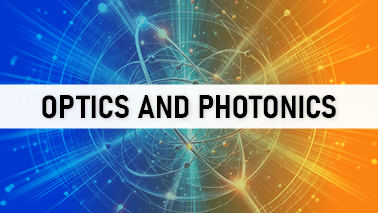
These fields have a wide range of applications, from imaging and communication to medical devices and quantum technologies.
An outline of optics and photonics is provided below:
Optics:
Geometrical Optics:
Reflection and Refraction: Study of the behavior of light rays when they encounter surfaces, leading to phenomena like reflection and refraction.
Lens Systems: Analysis of lenses and lens systems in terms of image formation and magnification.
Wave Optics:
Interference: Understanding the effects of the superposition of light waves, leading to constructive and destructive interference.
Diffraction: Investigation of the bending of light around obstacles or through apertures, causing patterns of light and dark fringes.
Polarization:
Polarized Light: Study of the polarization states of light and the manipulation of polarized light using optical components.
Optical Instruments:
Microscopes and Telescopes: Design and functioning of optical instruments for magnifying small or distant objects.
Spectrometers: Devices for measuring the spectrum of light, providing information about its composition.
Fiber Optics:
Total Internal Reflection: Exploiting the phenomenon of total internal reflection to guide light within optical fibers for high-speed communication.
Holography:
Holographic Imaging: Creating three-dimensional images using holography, which captures both intensity and phase information of light.
Photonics:
Photonic Devices:
Lasers: Understanding the principles of laser operation and their applications in various fields, including communications, medical devices, and material processing.
Light-Emitting Diodes (LEDs): Investigation of semiconductor devices that emit light, used in lighting and displays.
Photonic Crystals:
Bandgap Engineering: Design and manipulation of materials to control the propagation of light, leading to the creation of photonic bandgaps.
Quantum Optics:
Quantum Entanglement: Study of quantum phenomena in the context of optics, including entanglement and quantum teleportation.
Quantum Information Processing: Exploration of using photons for quantum computation and communication.
Optical Communication:
Fiber Optic Communication: Transmission of information using modulated light signals through optical fibers for high-speed and long-distance communication.
Optoelectronics:
Photodetectors and Photovoltaics: Development and application of devices that convert light into electrical signals (photodetectors) or electricity (solar cells).
Terahertz Photonics:
Terahertz Imaging: Utilizing the terahertz region of the electromagnetic spectrum for imaging and sensing applications, such as security screening and medical diagnostics
Optics and photonics play a crucial role in modern technology, impacting fields ranging from telecommunications and information processing to medical diagnostics and materials science. The ongoing advancements in these areas continue to drive innovation and contribute to various scientific and technological developments.
Tags
Physics Conferences 2025 UK
Nanotechnology Conferences 2025 Europe
Quantum Mechanics Conferences
Medical Physics Conferences
Quantum Computing Conferences
Materials Chemistry Conferences
Cosmology Conferences
Physics Conferences 2025 Europe
Condensed Matter Physics Conferences
Astrophysics Conferences
Materials Science Conferences

Perovskite materials have gained significant attention in recent years for their promising applications in photovoltaics and electronics. Perovskite solar cells, in particular, have shown remarkable progress in efficiency, making them a potential alternative to traditional silicon solar cells.
Here's an overview of perovskite materials in these two domains:
Perovskite Solar Cells:
Structure:
• Chemical Composition
• Cubic Crystal Structure
Fabrication:
• Solution Processing
• Thin-Film Deposition
Photovoltaic Performance:
• High Efficiency
• Broad Absorption Spectrum
Advantages:
• Low Cost
• Versatility
Challenges:
• Stability
• Toxicity
Perovskite Electronics:
Transistors and Optoelectronic Devices:
• Field-Effect Transistors (FETs)
• Light-Emitting Diodes (LEDs)
Memory Devices:
• Non-Volatile Memory
Advantages:
• Tunable Properties
• Solution Processing
Challenges:
• Material Stability
• Interface Engineering
Perovskite materials hold great promise for revolutionizing the fields of photovoltaics and electronics. Ongoing research aims to address stability issues and further improve the efficiency and reliability of perovskite-based devices. The versatility and tunability of perovskite materials make them exciting candidates for the next generation of solar cells and electronic devices.
Tags
Physics Conferences 2025 Asia
Nanotechnology Conferences
Physics Conferences 2025 UK
Materials Science Conferences
Physics Conferences 2025 Europe
Quantum Computing Conferences
Medical Physics Conferences
Physics Conferences
Materials Chemistry Conferences
Condensed Matter Physics Conferences
Physics Conferences 2025
Physical Chemistry Conferences

Physical oceanography is a branch of oceanography that focuses on understanding the physical properties and dynamics of the world's oceans. It involves the study of various physical aspects of the ocean, including temperature, salinity, density, currents, waves, tides, and the interaction of the ocean with the atmosphere.
Physical oceanography's primary research areas include:
Ocean Circulation: Investigating the movement of ocean currents, which are large-scale flows of seawater that circulate around the world's oceans. These currents play a crucial role in redistributing heat and influencing climate patterns.
Ocean Waves and Tides: Analyzing the behavior and characteristics of ocean waves and tides, which are periodic variations in sea level caused by gravitational interactions between the Earth, the Moon, and the Sun.
Ocean Structure: Examining the vertical and horizontal variations in ocean properties, such as temperature and salinity, and understanding how these variations impact the distribution of marine life and ocean circulation.
Sea Level Rise: Monitoring changes in sea level and understanding the factors contributing to sea level rise, including thermal expansion of seawater and the melting of polar ice caps and glaciers.
Ocean-Atmosphere Interactions: Investigating the interactions between the ocean and the atmosphere, including the exchange of heat, moisture, and gases. This field is critical for understanding climate patterns and variability.
Remote Sensing: Using satellite and other observational technologies to collect data on various oceanic parameters, providing a broader and more comprehensive understanding of ocean dynamics on a global scale.
Physical oceanographers use a combination of field observations, laboratory experiments, computer modeling, and remote sensing techniques to gather data and develop theories about the physical processes occurring in the oceans. The knowledge gained from physical oceanography contributes to our understanding of climate change, marine ecosystems, and the overall functioning of the Earth's oceans.
Tags
Astrophysics Conferences
Nanotechnology Conferences 2025 Europe
Particle Physics Conferences
Nanotechnology Conferences
Cosmology Conferences
Nuclear Physics Conferences
Physics Conferences 2025 Europe
Condensed Matter Physics Conferences
Quantum Mechanics Conferences
Medical Physics Conferences
Quantum Computing Conferences
Physics Conferences 2025
Physics Conferences 2025 USA

Plasma physics is a branch of physics that studies the behavior, properties, and applications of plasmas. A plasma is considered the fourth state of matter, distinct from solid, liquid, and gas, and is characterized by a collection of charged particles—ions and electrons—where the number of positive and negative charges is roughly equal. Plasmas exhibit unique and complex behaviors due to the presence of charged particles and the electromagnetic forces that govern their interactions.
The following are important topics and fields of study in plasma physics:
Basic Characteristics of Plasmas:
Ionization: The process by which atoms or molecules lose electrons, leading to the formation of ions.
Debye Shielding: The phenomenon where charged particles within a plasma are shielded from each other's electrical influence by a cloud of other charged particles.
Plasma Waves and Oscillations:
Langmuir Waves: Oscillations of electrons in a plasma that can lead to the formation of plasma waves.
Alfvén Waves: Magnetohydrodynamic waves that propagate in a magnetized plasma.
Magnetic Confinement and Fusion:
Magnetic Confinement: Techniques, such as tokamaks and stellarators, used to confine and control plasmas for the purpose of achieving nuclear fusion.
Fusion Reactions: Investigating the conditions necessary for sustained nuclear fusion, a process that powers the sun and has potential applications in clean energy production.
Plasma Instabilities:
Instabilities: Understanding the various instabilities that can arise within a plasma, leading to disruptions or changes in plasma behavior.
Turbulence: Studying the turbulent behavior of plasmas, which is crucial for understanding energy transport in fusion devices.
Space Plasmas:
Solar Wind: Examining the plasma expelled from the Sun, which interacts with planets and other celestial bodies.
Magnetospheres: Understanding the plasmas surrounding planets and the Earth's magnetosphere.
Applications:
Researchers in plasma physics employ a combination of theoretical models, laboratory experiments, and simulations to deepen our understanding of plasmas and explore potential applications in diverse fields. The study of plasma physics is interdisciplinary, involving elements of classical physics, electromagnetism, fluid dynamics, and quantum mechanics
Tags
Cosmology Conferences
Materials Science Conferences
Physics Conferences 2025 Asia
Quantum Mechanics Conferences
Astrophysics Conferences
Nuclear Physics Conferences
Nanotechnology Conferences
Physical Chemistry Conferences
Physics Conferences 2025 USA
Nanotechnology Conferences 2025 Europe
Condensed Matter Physics Conferences
Particle Physics Conferences
Physics Conferences 2025 Europe
Nanotechnology Conferences 2025 Europe
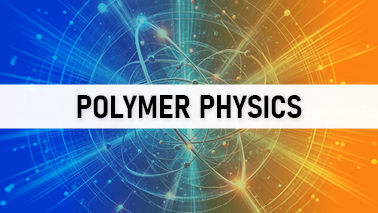
Polymer physics is a branch of physics that focuses on the study of the physical properties, behavior, and structure of polymers. Polymers are large molecules composed of repeating structural units, known as monomers, connected by covalent bonds. These materials exhibit unique physical and mechanical properties, making them essential in various industrial, biological, and everyday applications.
Significant aspects and fields of research in polymer physics consist of:
Polymer Structure:
Chemical Structure: Investigating the arrangement of monomers and the types of chemical bonds in polymer chains.
Molecular Weight and Distribution: Analyzing the size and distribution of polymer chains within a polymer sample.
Polymer Morphology:
Crystallinity: Understanding the presence and nature of crystalline regions within polymer structures.
Amorphous Regions: Examining the disordered, non-crystalline regions of polymer chains.
Polymer Chains and Conformation:
Polymer Conformation: Studying the different ways polymer chains can arrange themselves in space.
Polymer Entanglements: Investigating the interactions and entanglements between polymer chains.
Thermodynamics of Polymers:
Phase Transitions: Analyzing transitions between different states of matter in polymers, such as melting or glass transition.
Thermal Properties: Studying how temperature influences the physical properties of polymers.
Polymer Dynamics:
Viscoelasticity: Understanding the combined behavior of viscosity and elasticity in polymers.
Polymer Relaxation: Investigating the timescales over which polymers respond to external forces.
Polymer Processing:
Extrusion and Molding: Examining how polymers behave during processing techniques like extrusion and molding.
Film Formation: Understanding the processes involved in the formation of polymer films.
Polymer Blends and Composites:
Polymer Blending: Investigating the behavior of polymers when two or more types are combined.
Polymer Composites: Studying the addition of reinforcing materials to polymers to enhance their properties.
Applications of Polymers:
Polymer Engineering: Applying knowledge of polymer physics to design and optimize polymer-based materials for specific applications.
Biopolymers: Studying polymers found in biological systems, such as DNA, proteins, and carbohydrates.
Polymer physics involves both experimental and theoretical approaches. Experimental techniques include methods like X-ray diffraction, spectroscopy, and rheology to analyze polymer structures and properties. Theoretical models, such as the random walk model, help describe polymer chain conformations and predict polymer behavior under different conditions. Understanding polymer physics is crucial for developing new materials and improving existing ones in industries ranging from plastics and rubber to biomedical applications.
Tags
Quantum Computing Conferences
Quantum Mechanics Conferences
Medical Physics Conferences
Materials Chemistry Conferences
Physics Conferences 2025
Nanotechnology Conferences 2025 Europe
Cosmology Conferences
Astrophysics Conferences
Nuclear Physics Conferences
Physics Conferences
Nanotechnology Conferences
Particle Physics Conferences
Physics Conferences 2025 Europe

Quantum chemistry is a branch of theoretical chemistry that applies principles and methods of quantum mechanics to understand and predict the behavior of atoms and molecules. It provides a theoretical framework for studying the electronic structure of matter at the molecular and subatomic levels. Quantum chemistry plays a pivotal role in explaining the fundamental principles governing chemical bonding, molecular geometry, and spectroscopy.
Crucial aspects and fields of research in quantum chemistry include the following:
Wave Function and Schrödinger Equation:
Wave Function (Ψ): Describing the quantum state of electrons in a system.
Schrödinger Equation: The fundamental equation of quantum mechanics that describes how the quantum state evolves over time.
Electronic Structure:
Atomic Orbitals: Describing the spatial distribution of electrons around an atomic nucleus.
Molecular Orbitals: Investigating the distribution of electrons in molecules formed by the combination of atomic orbitals.
Quantum Numbers:
Principal, Angular Momentum, Magnetic, and Spin Quantum Numbers: Defining the quantum state of electrons and their behavior in an atom or molecule.
Chemical Bonding:
Covalent Bonding: Understanding the sharing of electrons between atoms in molecules.
Ionic Bonding: Describing the transfer of electrons between atoms to form ions.
Hydrogen Bonding: Examining special interactions between hydrogen and other electronegative atoms.
Molecular Geometry and Spectroscopy:
VSEPR Theory: Predicting the three-dimensional geometry of molecules based on electron pair repulsion.
Rotational, Vibrational, and Electronic Spectroscopy: Analyzing the interaction of molecules with electromagnetic radiation.
Electronic Excitations:
Electronic Transitions: Studying the movement of electrons between energy levels, leading to the absorption or emission of light.
UV-Visible Spectroscopy: Examining the absorption of ultraviolet and visible light by molecules.
Quantum Chemical Calculations:
Hartree-Fock Method: A basic quantum chemical method for calculating the electronic structure of atoms and molecules.
Density Functional Theory (DFT): A more advanced method for describing the electronic structure using electron density.
Computational Quantum Chemistry:
Molecular Dynamics: Simulating the motion of atoms and molecules over time.
Ab Initio and Semi-Empirical Methods: Employing computational techniques to solve the Schrödinger equation for complex molecular systems.
Quantum chemistry is essential for gaining insights into chemical reactions, understanding molecular properties, and predicting the behavior of matter at the quantum level. It forms the foundation for computational chemistry, where advanced algorithms and supercomputers are used to solve complex quantum mechanical problems for large molecules and reactions. The field continues to evolve, contributing to advancements in materials science, drug discovery, and various other areas of applied chemistry.
Tags
Physics Conferences 2025 Europe
Physics Conferences 2025 USA
Physical Chemistry Conferences
Physics Conferences 2025 UK
Nanotechnology Conferences 2025 Europe
Particle Physics Conferences
Physics Conferences 2025 Asia
Nuclear Physics Conferences
Quantum Mechanics Conferences
Materials Science Conferences
Condensed Matter Physics Conferences
Nanotechnology Conferences
Physics Conferences
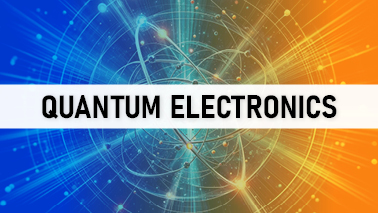
Quantum electronics is a field of study that combines principles of quantum mechanics and electronics to explore and exploit the unique quantum properties of electrons for technological applications. It encompasses the use of quantum phenomena, such as superposition and entanglement, to develop electronic devices that operate on the principles of quantum mechanics. Quantum electronics is a crucial component of quantum information science and technology, with potential applications in quantum computing, quantum communication, and quantum sensing.
Studies in quantum electronics that are important involve the following:
Quantum Superposition:
Superposition Principle: Exploiting the ability of quantum systems to exist in multiple states simultaneously.
Quantum Bits (Qubits): Using quantum bits as the fundamental units of quantum information, which can exist in a superposition of both 0 and 1 states.
Quantum Entanglement:
Entanglement: Utilizing the correlated states of quantum systems, even when spatially separated.
Quantum Key Distribution (QKD): Applying entanglement for secure communication through quantum cryptography.
Quantum States of Electrons:
Electron Spin: Leveraging the intrinsic angular momentum of electrons for quantum information processing.
Quantum Dots and Wells: Exploiting confined electron states in semiconductor structures.
Quantum Optics:
Quantum Coherence: Maintaining and utilizing quantum coherence in the behavior of photons.
Quantum Gates: Implementing logical operations using quantum states of photons for quantum computing.
Quantum Information Processing:
Quantum Algorithms: Developing algorithms that harness the power of quantum parallelism and entanglement.
Quantum Circuits: Designing electronic circuits that process quantum information.
Quantum Communication:
Quantum Teleportation: Investigating the transfer of quantum states between distant particles.
Quantum Repeaters: Enhancing the range of quantum communication for secure long-distance transmission.
Quantum Sensing and Metrology:
Quantum Sensors: Developing highly precise sensors based on quantum phenomena.
Quantum Metrology: Achieving ultra-precise measurements using quantum states.
Quantum Computing Hardware:
Superconducting Qubits: Implementing qubits using superconducting circuits.
Trapped Ions: Utilizing trapped ions as qubits in quantum computing platforms.
Quantum electronics has the potential to revolutionize information processing, communication, and sensing by harnessing the principles of quantum mechanics. Researchers and engineers in this field aim to develop practical quantum devices that can outperform classical electronic devices in specific tasks. While many challenges remain, quantum electronics is a rapidly advancing field with significant implications for the future of technology.
Tags
Condensed Matter Physics Conferences
Physics Conferences 2025
Quantum Computing Conferences
Quantum Mechanics Conferences
Nanotechnology Conferences 2025 Europe
Medical Physics Conferences
Materials Science Conferences
Cosmology Conferences
Nanotechnology Conferences
Physics Conferences 2025 Asia
Physics Conferences 2025 UK
Nanotechnology Conferences 2025 Europe
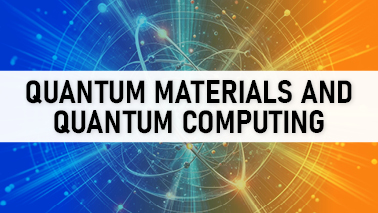
Quantum materials and quantum computing are two fascinating and interconnected areas within the broader field of quantum physics. Let's explore each one:
Quantum Materials:
Quantum materials refer to materials whose properties and behaviors are strongly influenced by quantum mechanical effects. These materials often exhibit unique and novel electronic, magnetic, or optical properties that are not possible in classical materials.
Key Concepts:
Quantum Computing:
Quantum computing is a paradigm of computing that uses the principles of quantum mechanics to perform certain types of calculations more efficiently than classical computers. It harnesses the properties of quantum bits or qubits, which can exist in multiple states simultaneously due to superposition and can be entangled with other qubits.
Key Concepts:
Challenges:
Quantum Decoherence: The fragility of quantum states, which can be easily disturbed by the environment, leading to errors in computations.
Quantum Error Correction: Developing techniques to mitigate errors in quantum computations.
Potential Applications:
Current Status:
Quantum computing is still in the early stages of development, with practical, large-scale quantum computers a subject of ongoing research and engineering efforts.
Both quantum materials and quantum computing are at the forefront of scientific exploration, with the potential to revolutionize various fields, from materials science to information processing, as our understanding and technology continue to advance.
Tags
Physics Conferences 2025 Asia
Condensed Matter Physics Conferences
Physics Conferences 2025 UK
Nuclear Physics Conferences
Materials Chemistry Conferences
Materials Science Conferences
Physics Conferences 2025 USA
Physics Conferences 2025 Europe
Particle Physics Conferences
Physics Conferences 2025
Astrophysics Conferences
Quantum Computing Conferences
Physics Conferences
Physical Chemistry Conferences
Quantum Mechanics Conferences

Solid-state physics is a branch of condensed matter physics that studies the physical properties of solid materials, which include crystals, semiconductors, metals, and insulators. The discipline explores the behavior of atoms and electrons within these materials, aiming to understand their macroscopic properties and how they respond to external conditions.
The following are the main topics and facets of solid-state physics research:
Crystal Structure:
Crystal Lattices: Describing the three-dimensional arrangement of atoms in a crystal.
Unit Cells: The smallest repeating unit within a crystal lattice.
Bragg's Law: Explaining the diffraction of X-rays by crystals.
Electronic Structure:
Band Theory: Describing the distribution of energy levels for electrons in a solid.
Fermi Surface: Representing the boundary between occupied and unoccupied electronic states.
Electronic Band Gaps: Understanding the energy gaps between electron bands in semiconductors and insulators.
Thermal Properties:
Magnetic Properties:
Ferromagnetism, Antiferromagnetism, and Ferrimagnetism: Different types of magnetic ordering in solids.
Magnetic Domains: Regions with uniform magnetization in a ferromagnetic material.
Spintronics: Exploring the role of electron spin in electronic devices.
Electrical Properties:
Optical Properties:
Optical Absorption and Emission: Investigating how materials interact with light.
Photonic Crystals: Materials with periodic structures that affect the flow of photons.
Lasers and Light-Emitting Diodes (LEDs): Applications of solid-state physics in optoelectronic devices.
Defects and Imperfections:
Point Defects: Vacancies, interstitials, and substitutions affecting the crystal structure.
Dislocations and Grain Boundaries: Structural irregularities within a crystal lattice.
Doping: Introducing impurities to modify the electrical properties of a material.
Modern Applications:
Solid-state physics plays a crucial role in the development of materials and technologies that form the basis of modern electronics, telecommunications, and energy conversion. Advances in this field continue to drive innovation in various industries and contribute to our understanding of the fundamental properties of matter.
Tags
Condensed Matter Physics Conferences
Physics Conferences 2025 USA
Quantum Mechanics Conferences
Medical Physics Conferences
Nanotechnology Conferences 2025 Europe
Nuclear Physics Conferences
Nanotechnology Conferences
Physics Conferences 2025 UK
Materials Chemistry Conferences
Physics Conferences 2025
Cosmology Conferences
Materials Science Conferences
Quantum Computing Conferences
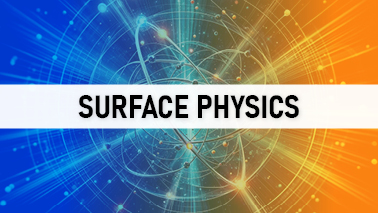
Surface physics is a branch of condensed matter physics that focuses on the study of physical and chemical phenomena that occur at the surfaces and interfaces of materials. Understanding surface properties is crucial in various scientific and technological applications, ranging from catalysis and materials science to electronics and nanotechnology.
The main ideas and fields of study in surface physics are as follows:
Surface Structure:
Crystallography: Investigating the atomic arrangement at the surface of materials.
Surface Reconstruction: Changes in the atomic arrangement due to surface energy minimization.
Surface Defects: Understanding the role of vacancies, adatoms, and steps in surface structure.
Surface Composition:
Surface Analysis Techniques: Employing methods like X-ray photoelectron spectroscopy (XPS) and Auger electron spectroscopy (AES) to determine surface elemental composition.
Surface Segregation: Migration of specific elements toward or away from the surface.
Surface Dynamics:
Surface Diffusion: Movement of atoms or molecules across a surface.
Adsorption and Desorption: Interaction of gas or liquid molecules with a surface.
Catalysis: Investigating how surface properties influence chemical reactions.
Electronic Properties:
Mechanical Properties:
Nanoscale Surface Physics:
Nanomaterials: Investigating the unique properties of surfaces in nanoscale materials.
Scanning Probe Microscopy: Techniques like atomic force microscopy (AFM) and scanning tunneling microscopy (STM) for imaging and manipulating surfaces at the atomic scale.
Nanotechnology: Applying surface physics principles to develop nanoscale devices and materials.
Applications:
Surface Energy and Wetting:
Contact Angle: Describing how droplets or liquid films interact with a solid surface.
Surface Tension: Energy required to increase the surface area of a liquid.
Surface physics plays a critical role in tailoring the properties of materials for specific applications, from designing efficient catalysts to improving the performance of electronic devices. Advancements in surface physics have contributed significantly to the development of novel materials and technologies across various industries.
Tags
Condensed Matter Physics Conferences
Particle Physics Conferences
Nuclear Physics Conferences
Physics Conferences 2025 Europe
Medical Physics Conferences
Quantum Computing Conferences
Nanotechnology Conferences
Materials Science Conferences
Materials Chemistry Conferences
Physical Chemistry Conferences
Physics Conferences 2025
Cosmology Conferences
Quantum Mechanics Conferences
Physics Conferences 2025 USA

Vehicle dynamics is a branch of mechanical engineering that deals with the study of the motion of vehicles. It involves analyzing the forces and moments acting on the vehicle and how these affect its motion, stability, and handling characteristics. Understanding vehicle dynamics is crucial for designing and optimizing the performance, safety, and comfort of automobiles.
Vehicle dynamics involves several important ideas and elements, such as:
Vehicle Motion:
Longitudinal Motion: Movement along the vehicle's axis, involving acceleration, braking, and cruising.
Lateral Motion: Side-to-side movement, including turning, cornering, and lane-changing.
Forces and Moments:
Aerodynamic Forces: Air resistance affecting the vehicle's motion.
Tire Forces: Interaction between tires and the road, including longitudinal and lateral forces.
Suspension Forces: Forces within the vehicle's suspension system.
Vehicle Stability:
Yaw, Pitch, and Roll: Rotational movements around the vehicle's center of gravity.
Oversteer and Understeer: Describing the behavior of a vehicle in turns.
Tire Characteristics:
Tire Slip: Difference between the actual and ideal tire velocities.
Tire Traction: Relationship between the tire's force and slip.
Suspension Systems:
Suspension Geometry: Design and arrangement of suspension components.
Spring and Damper Characteristics: Influence on ride comfort and handling.
Active Suspension Systems: Computer-controlled systems to optimize ride and handling.
Steering Systems:
Steering Geometry: Design of steering linkages.
Steering Ratio: Ratio of the turn of the steering wheel to the turn of the wheels.
Ackermann Steering: Design to minimize tire scrub during turns.
Braking Systems:
Brake Distribution: Balancing braking forces between front and rear axles.
Antilock Braking System (ABS): Preventing wheel lock-up during braking.
Handling and Performance Metrics:
Skid Pad Testing: Evaluating lateral grip.
Slalom Testing: Assessing agility and responsiveness.
Braking Distance: Measuring stopping performance.
Advanced Driver Assistance Systems (ADAS):
Electronic Stability Control (ESC): Mitigating skidding and improving stability.
Collision Avoidance Systems: Using sensors to enhance safety.
Understanding and optimizing vehicle dynamics is crucial for designing vehicles that not only meet safety standards but also provide a satisfying and predictable driving experience. Engineers use theoretical models, computer simulations, and real-world testing to fine-tune the dynamics of vehicles to achieve desired performance characteristics.
Tags
Materials Chemistry Conferences
Quantum Mechanics Conferences
Cosmology Conferences
Physics Conferences 2025 Asia
Nanotechnology Conferences 2025 Europe
Condensed Matter Physics Conferences
Quantum Computing Conferences
Materials Science Conferences
Nanotechnology Conferences 2025 Europe
Particle Physics Conferences
List of Physics and Materials Science Companies in Europe
Samsung Electronics Co., Ltd. (South Korea) / Toshiba Corporation (Japan) / Sony Corporation (Japan) / Toyota Motor Corporation (Japan) / TSMC - Taiwan Semiconductor Manufacturing Company (Taiwan) / Canon Inc. (Japan) / SK Hynix Inc. (South Korea) / Hitachi, Ltd. (Japan) / Hyundai Motor Company (South Korea) / LG Display Co., Ltd. (South Korea) / Lenovo Group Limited (China) / Baidu, Inc. (China) / Alibaba Group Holding Limited (China) / Foxconn Technology Group (Taiwan) / Panasonic Corporation (Japan) / Acer Inc. (Taiwan) / Nidec Corporation (Japan) / NEC Corporation (Japan) / Mitsubishi Electric Corporation (Japan) / Lam Research Corporation (United States - with significant operations in Asia) / Advantest Corporation (Japan) / ASUSTeK Computer Inc. (Taiwan) / Wuhan Iron and Steel Group Corporation (China) / China Baowu Steel Group Corporation Limited (China) / China National Offshore Oil Corporation (CNOOC) (China) / BYD Company Limited (China) / Wistron Corporation (Taiwan) / China National Petroleum Corporation (CNPC) (China) / BOE Technology Group Co., Ltd. (China) / Sinopec Group (China) / India Oil Corporation Limited (IOCL) (India) / Tata Consultancy Services (TCS) (India) / Infosys Limited (India) / Reliance Industries Limited (India) / Hindustan Petroleum Corporation Limited (HPCL) (India) / Bharat Petroleum Corporation Limited (BPCL) (India) / Indian Oil Corporation Limited (IOCL) (India) / HCL Technologies Limited (India) / Tata Steel Limited (India) / Essar Group (India) / LG Chem, Ltd. (South Korea) / POSCO - Pohang Iron and Steel Company (South Korea) / SK Innovation Co., Ltd. (South Korea) / China Steel Corporation (CSC) (Taiwan) / Hon Hai Precision Industry Co., Ltd. (Foxconn - Taiwan) / China Aerospace Science and Technology Corporation (CASC) (China) / China National Space Administration (CNSA) (China) / China Aerospace Corporation (CASC) (China) / Hyundai Heavy Industries Group (South Korea) / SK Telecom Co., Ltd. (South Korea) / China Southern Power Grid Co., Ltd. (China) / Tosoh Corporation (Japan) / Toyo Tanso Co., Ltd. (Japan) / Aisin Seiki Co., Ltd. (Japan) / SKC Co., Ltd. (South Korea) / China National Nuclear Corporation (CNNC) (China) / CITIC Limited (China) / China General Nuclear Power Group (CGN) (China) / China Three Gorges Corporation (CTG) (China) / Posco Chemtech Co., Ltd. (South Korea) / China National Building Materials Group Corporation (CNBM) (China) / S-Oil Corporation (South Korea) / Samsung SDI Co., Ltd. (South Korea) / BYD Electronic (International) Company Limited (China) / TCL Corporation (China) / CNOOC - China National Offshore Oil Corporation (China) / Suzuki Motor Corporation (Japan) / China National Chemical Corporation (ChemChina) (China) / Lotte Chemical Corporation (South Korea) / Indian Space Research Organisation (ISRO) (India) / Samsung Electro-Mechanics Co., Ltd. (South Korea) / Hanwha Chemical Corporation (South Korea) / SK Innovation Co., Ltd. (South Korea) / Kia Corporation (South Korea) / GS Caltex Corporation (South Korea)
LG Innotek Co., Ltd. (South Korea) / China National Chemical Engineering Co., Ltd. (CNCEC) (China) / JSW Steel Limited (India) / Wuxi AppTec Co., Ltd. (China) / Lotte Corporation (South Korea) / Yakult Honsha Co., Ltd. (Japan) / United Microelectronics Corporation (UMC) (Taiwan) / JFE Steel Corporation (Japan) / China Minmetals Corporation (China) / Hindalco Industries Limited (India) / Honeywell International Inc. (United States - with significant operations in Asia) / LG Hausys, Ltd. (South Korea) / SK Networks Co., Ltd. (South Korea) / Hanwha Aerospace Co., Ltd. (South Korea) / Dongkuk Steel Mill Co., Ltd. (South Korea) / Shin-Etsu Chemical Co., Ltd. (Japan) / GS E&C Corporation (South Korea) / Hyundai Engineering & Construction Co., Ltd. (South Korea) / Posco International Corporation (South Korea) / SKC Haas Display Film Co., Ltd. (South Korea) / LG Display Co., Ltd. (South Korea) / LG Chem, Ltd. (South Korea) / Samsung Engineering Co., Ltd. (South Korea) / Hyundai Rotem Company (South Korea) / Kolon Industries, Inc. (South Korea) / Samsung Biologics Co., Ltd. (South Korea) / BYD Electronic (International) Company Limited (China) / TCL Corporation (China) / CNOOC - China National Offshore Oil Corporation (China) / Suzuki Motor Corporation (Japan) / China National Chemical Corporation (ChemChina) (China)
List of Physics and Materials Science Companies in USA
IBM Research / Lockheed Martin / NASA / Boeing / Intel Corporation / Northrop Grumman / Raytheon Technologies / SpaceX / General Electric (GE) / DowDuPont / Corning Incorporated / IBM (International Business Machines Corporation) / Applied Materials / 3M / Johnson & Johnson / Texas Instruments / Micron Technology / General Motors / Tesla, Inc. / National Instruments / Ford Motor Company / Qualcomm Incorporated / Honeywell / General Dynamics / Micron Technology / Broadcom Inc. / General Electric Aviation / Sandia National Laboratories / Los Alamos National Laboratory / Lawrence Berkeley National Laboratory / Lawrence Livermore National Laboratory / Oak Ridge National Laboratory / MIT Lincoln Laboratory / Johns Hopkins University Applied Physics Laboratory / Lawrence Berkeley National Laboratory / National Renewable Energy Laboratory (NREL) / SLAC National Accelerator Laboratory / Xerox Corporation / Micron Technology / Analog Devices / Lam Research / AMETEK, Inc. / NXP Semiconductors / Micron Technology / Dow Chemical Company / HP Inc. (Hewlett-Packard) / IBM Almaden Research Center / Lam Research Corporation / Texas Instruments / NVIDIA Corporation / Bose Corporation / Eastman Chemical Company / Dupont / Boston Scientific Corporation / Edwards Lifesciences
Cree, Inc. / Boston Scientific Corporation / Varian Medical Systems / Medtronic / Thermo Fisher Scientific / Illumina, Inc. / National Instruments / Xilinx, Inc. / Western Digital / Skyworks Solutions / Cognex Corporation / Ball Aerospace / FLIR Systems / BAE Systems / Kyocera Corporation / Skyworks Solutions / Harris Corporation / ON Semiconductor / Analog Devices, Inc. / Broadcom Inc. / II-VI Incorporated / Parker-Hannifin Corporation / Ingersoll Rand / Lam Research Corporation / Keysight Technologies / Illumina, Inc. / TE Connectivity / MKS Instruments / Nucor Corporation / Ingersoll Rand / Regeneron Pharmaceuticals / L3Harris Technologies / Eastman Chemical Company / Corning Incorporated / Celanese Corporation / Air Products and Chemicals, Inc. / Avery Dennison Corporation / Corning Incorporated / Celanese Corporation / Northrop Grumman Innovation Systems / Merck & Co., Inc. / Novartis International AG / Johnson Matthey / Charles River Laboratories / Nucor Corporation / Huntington Ingalls Industries / KLA Corporation / Teradyne, Inc. / IDEX Corporation / Fortive Corporation / Linde plc / Arista Networks / Microchip Technology / Juniper Networks / Jabil Inc. / Cerner Corporation / Masimo Corporation / First Solar, Inc. / West Pharmaceutical Services / Maxim Integrated / Zimmer Biomet Holdings, Inc. / Synopsys, Inc. / Biogen Inc. / PerkinElmer, Inc. / Waters Corporation / IDEX Corporation / Becton, Dickinson and Company (BD) / Axcelis Technologies, Inc. / Masimo Corporation / Agilent Technologies / Cadence Design Systems / MKS Instruments / KLA Corporation / Corning Incorporated / Hexcel Corporation / Oshkosh Corporation / Teradyne, Inc. / Becton, Dickinson and Company (BD) / Stryker Corporation / Waters Corporation / Synopsys, Inc. / Varian Medical Systems / Lam Research Corporation / Skyworks Solutions / Texas Instruments / Raytheon Technologies / BAE Systems / Aerojet Rocketdyne Holdings, Inc. / Orbital ATK / Terex Corporation / General Dynamics Electric Boat / Raytheon Company / Textron Inc. / Woodward, Inc.
Contact us now and we will make your event unique & unforgettable
All numbers indicates percentage %
Europe
North America
Middle East
Asia Pacific
Africa
All numbers indicates percentage %
Physicists and Chemists
Materials Scientists & Nanotechnologists
Chemical Engineers
Faculty Members, Lecturers and Educators
Entrepreneurs or Business Leaders
Ph.D. Students and Postdocs
Multidisciplinary Researchers & Scientists

The classic pattern mining is a fundamental topic in data mining and has been studied extensively for over 30 years but left with no reliable mining approach yet. This report will first present why the case is, and then what the author’s study has found and what progress has made toward the reliable mining. It includes the app

This unique research investigates the co-doping effects of Ba and Ra on the structural, electronic, optical, thermodynamics and mechanical response of Bulk-like ZnO and ZnS based 3d-dimensional crystal structures. Using Heydscuseria-Ernzerhof screened hybrid functional (HSE06) and generalized gradient approximation (GGA) with no

I briefly present the evidence on extragalactic planets equivalent to the proposed counterpart Nemesis in the solar system. I theorize that the phenomenon is common for black holes and they aid star cluster formation. The observational evidence for these objects are presented with the instances of the Triffid Nebula M20 with gro
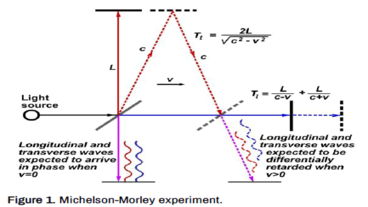
What happens to a laser beam that points from the bottom of a train (at rest) to a point in the ceiling when the train is moving very fast. Will the beam still hit this point, or will it hit the ceiling behind this point? In the years around 1900 scientists were convinced that photons get a lateral momentum in the direction of m
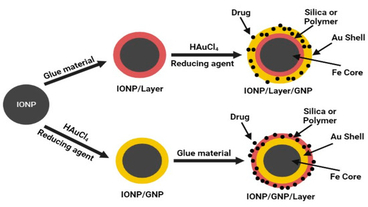
Magnetic gold nanoparticles (mGNP) have become a great interest of research for nanomaterial scientists because of their significant magnetic and plasmonic properties applicable in biomedical applications. Various synthetic approaches and surface modification techniques have been used for mGNP including the most common being the
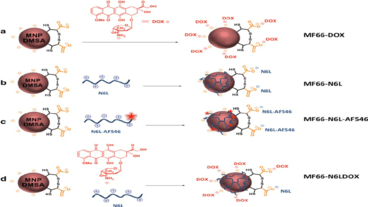
This talk will focus on the description of surface functionalized ultrafine CoFe2O4 nanoparticles (NPs), with mean diameter ~ 5 nm. The investigated properties include DC magnetization and AC susceptibility measurements over the temperature range of 4 – 400 K. All evaluated NPs present the same CoFe2O4 core, with different m
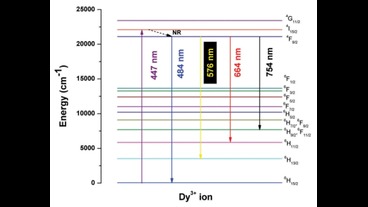
In this wide-ranging work, we examine a collection of research papers devoted to the investigation of white light emission, both from Dy3+ doped and undoped phosphor materials, with a particular emphasis on optimizing the optical emission properties for commercial white light emitting diodes (wLEDs). In a quest of a singular pho
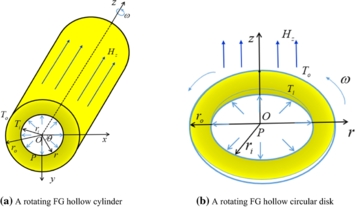
Functionally graded materials (FGM) are the materials that are developed for special performance or function. In this material, some of the material properties like elasticity modulus, density, etc are chosen as a special function. This may lead to encountering differential equations that are difficult to solve. Analytical appro

?he origin and seismic activity on the extraterrestrial bodies are expected to be similar, but the space missions to the Moon and Mars equipped by seismometric devices, show significant differences in the space-time distribution of the seismicity, as well as about the sources of the Moonquakes and Marsquakes. The Moonquake

